Breaking
- MENU
Lorem Ipsum is simply dummy text of the printing and typesetting industry.
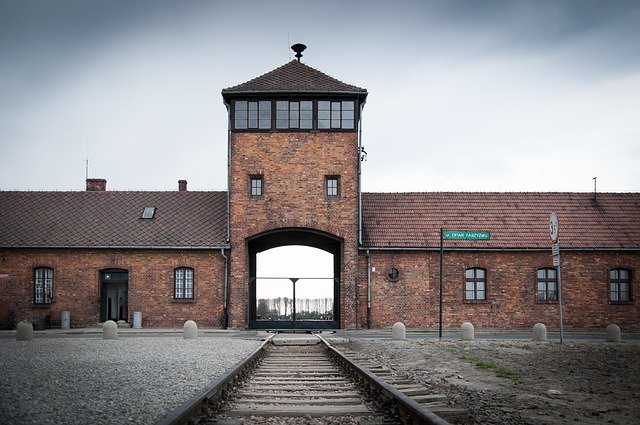
A special issue of Patterns of Prejudice co-edited by Roni Mikel Arieli and Sarah Phillips Casteel
In the 1930s and 1940s, colonial spaces became places of refuge for some fleeing Nazi-controlled Europe; for others, they were places of detention. The stories of refugee resettlement in Shanghai, Australia, Palestine and of the infamous journey of the SS St. Louis to Cuba are relatively well known. However, it is only recently that less familiar refugee trajectories to the Dominican Republic, Martinique, Mauritius, Southern Africa, Iran, India, Central Asia and elsewhere have begun to be explored by historians and other scholars. By tracing refugee escape routes, this special issue explores often unrecognized entanglements between wartime Europe and the colonial world. Retelling wartime history not solely as a European story but as one that reveals the interconnectedness of Europe and the Global South, the special issue contributes to the current ’colonial turn‘ in Holocaust Studies.
Creative writers have often led the way in recovering the memory of refugee experiences in colonial spaces. Examples ranging from Anita Desai's classic novel Baumgartner's Bombay (1988) to more recent works such as Nathacha Appanah's Le Dernier Frère (2007) and Louis-Philippe Dalembert's Avant que les ombres s'effacent (2017) attest that fiction can be a particularly effective vehicle for circulating such memories. Autobiographical novels such as Stefanie Zweig's Nirgendwo in Afrika (1995) and films such as Su Goldfish's The Last Goldfish (2017) record familial memories of refugee escape and resettlement. Moreover, among the refugees themselves were a number of writers and artists. In 1941, a single refugee ship travelling from Marseille to Martinique carried the writer Anna Seghers, the photographer Germaine Krull and the painter Wifredo Lam. Among the Jews deported to Mauritius in 1940 were German painter Anna Frank Klein, Czech artist Peretz Bede Mayer and Austrian artist Fritz Haendel.
We invite discussions of this topic that adopt both historical and cultural approaches. Submissions may engage with archival materials, print culture, memoirs, literature, photography, painting, film, music and other sources. We are particularly interested in contributions that address the following issues:
Proposals (no more than 1 page) and a brief biographical note (maximum 100 words) should be submitted to Roni Mikel Arieli (roni.mikel@mail.huji.ac.il) and Sarah Phillips Casteel (sarah.casteel@carleton.ca) by 30 June 2021. Full drafts of the short-listed articles will be due by 30 January 2022.
Contact Info: Dr. Roni Mikel Arieli & Prof. Sarah Phillips Casteel
Contact Email:
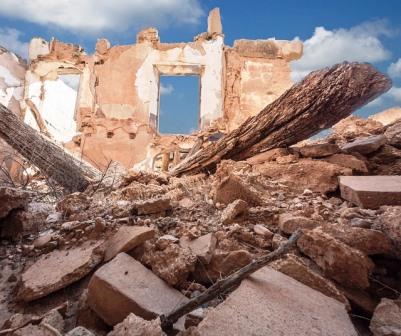
U.S. Naval War College, Newport invites you to Webinar The 4th Annual Genocide Studies Conference: War Cri
Read More »
Society for Policy Studies in association with India International Centre invites you to a Public Lecture on
Read More »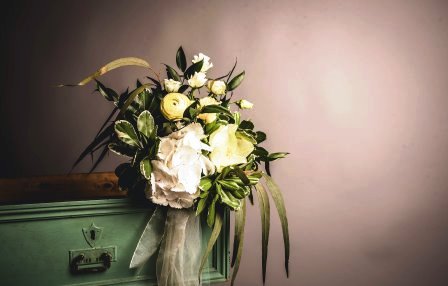
On Thursday, March 19, 2020, 10:00-12:00, in conjunction with the annual conference of the Association for Asi
Read More »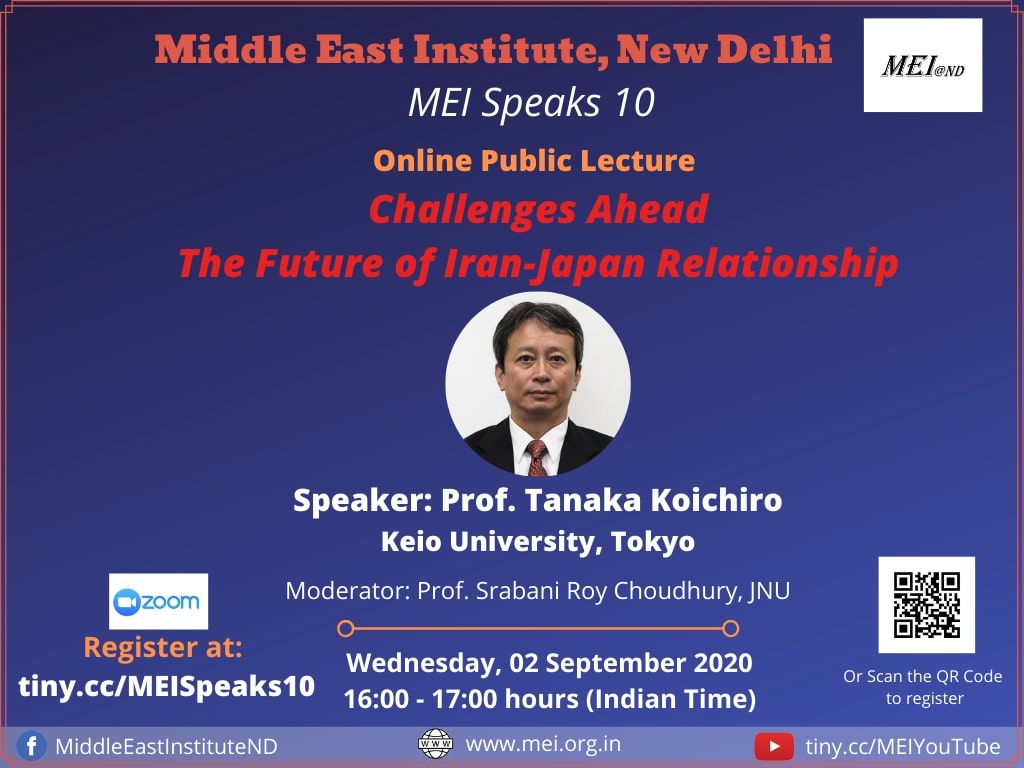
Middle East Institute, New Delhi invites you to MEI Speaks 10: Online Public Lecture Title: Challenges Ahea
Read More »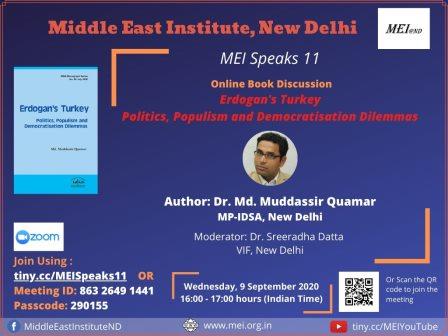
Middle East Institute, New Delhi invites you to MEI Speaks 11: Online Book Discussion Title: Erdogan’
Read More »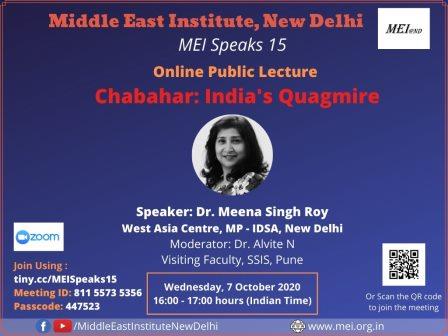
Middle East Institute, New Delhi invites you to MEI Speaks 15: Online Public Lecture Title: Chabahar: India
Read More »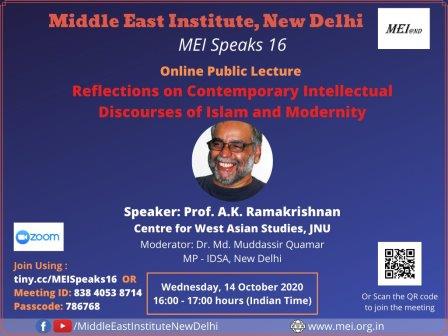
Middle East Institute, New Delhi invites you to MEI Speaks 16: Online Public Lecture Title: Reflections on
Read More »
Middle East Institute, New Delhi invites you to MEI Speaks 18: Online Public Lecture Title: Israel and the
Read More »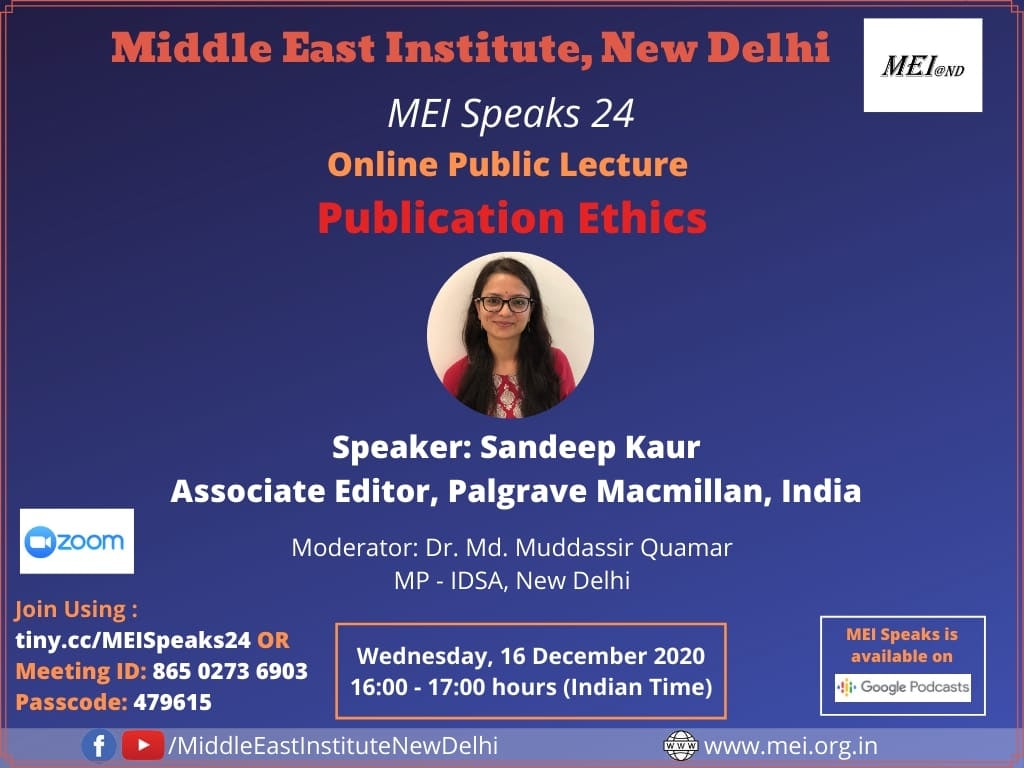
Middle East Institute, New Delhi invites you to MEI Speaks 23: Online Public Lecture Title: Publication Eth
Read More »
Middle East Institute, New Delhi invites you to MEI Speaks 14: Online Book Discussion Title: Persian Gulf 2
Read More »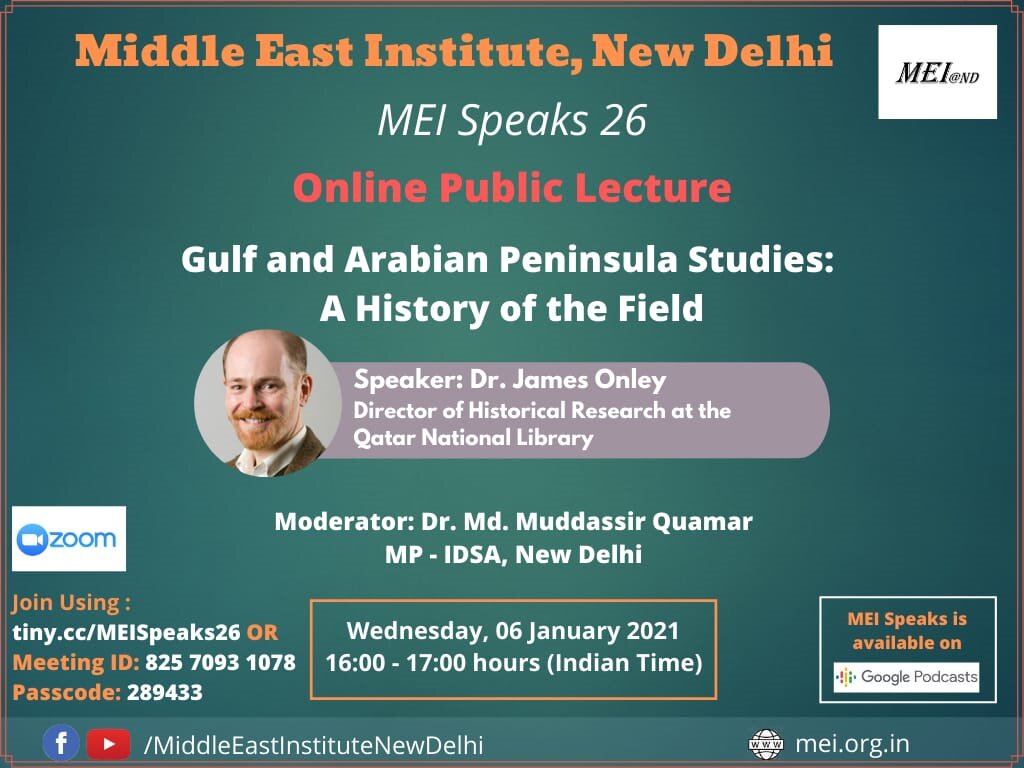
Middle East Institute, New Delhi invites you to MEI Speaks 26: Online Public Lecture Title: Gulf and Arabia
Read More »
Middle East Institute, New Delhi invites you to MEI Speaks 27: Online Book Discussion Title: The Star and t
Read More »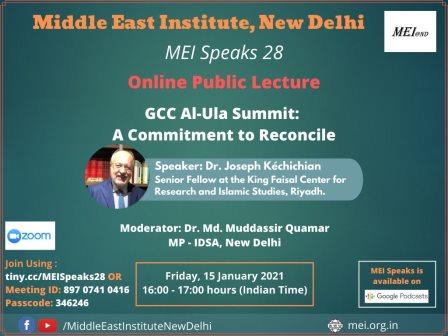
Middle East Institute, New Delhi invites you to MEI Speaks 28: Online Public Lecture Title: GCC Al-Ula Summ
Read More »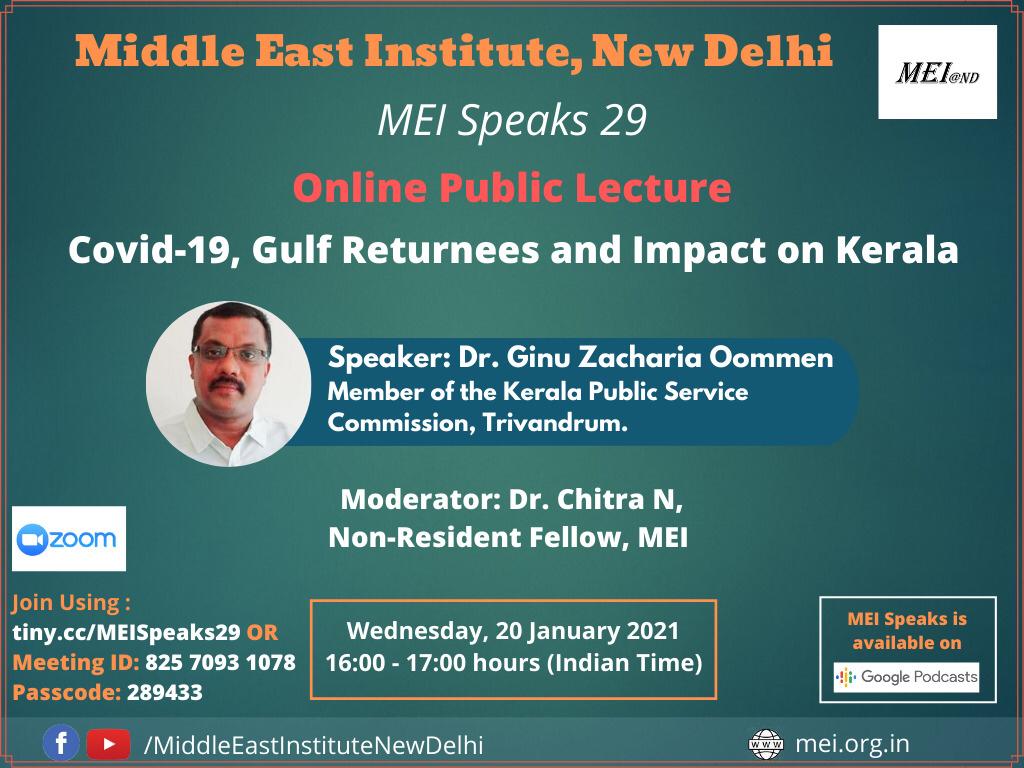
Middle East Institute, New Delhi invites you to MEI Speaks 29: Online Public Lecture Title: Covid-19, Gulf
Read More »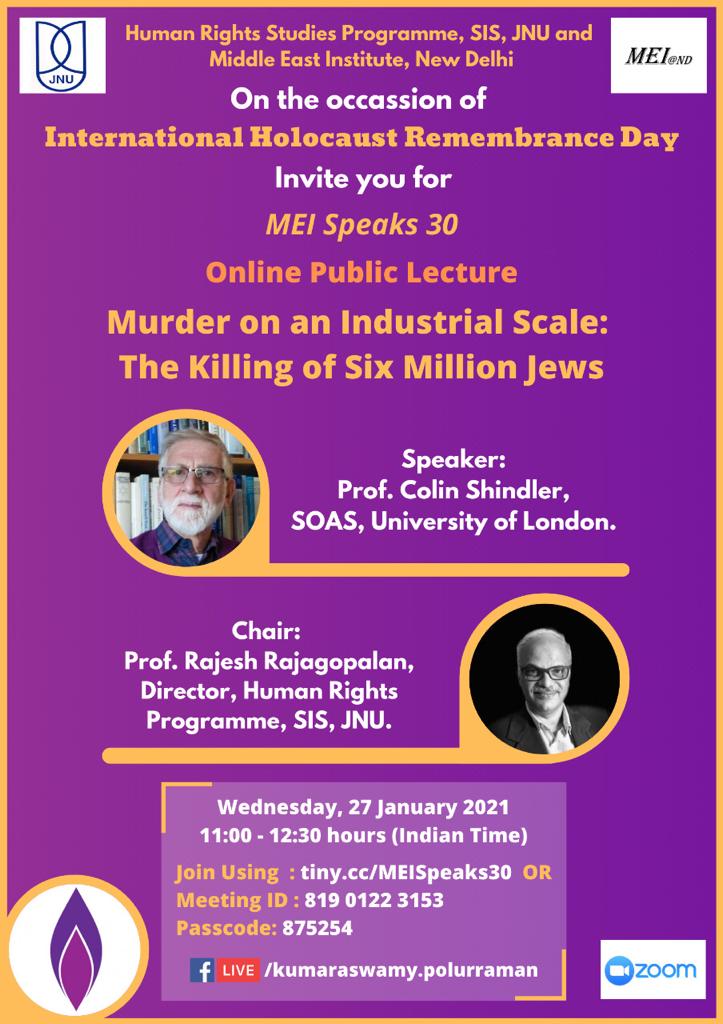
Middle East Institute, New Delhi invites you to MEI Speaks 30: Online Public Lecture Title: Murder on an In
Read More »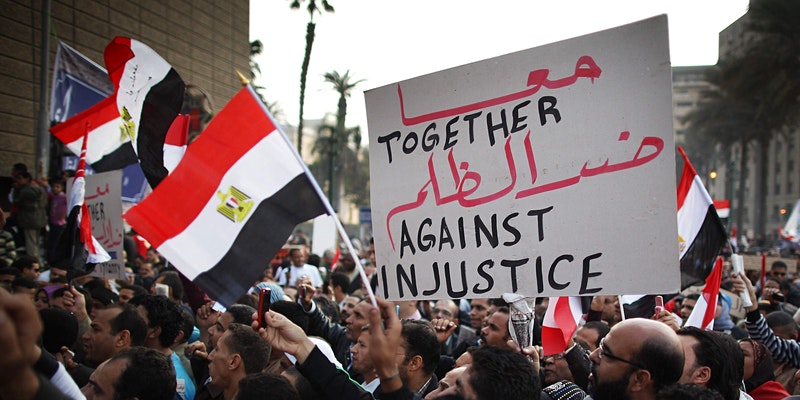
Project for Study of the 21st Century invites you to an online event Title: The Arab Spring: 10 years on
Read More »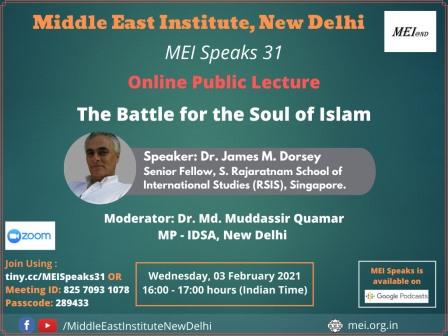
Middle East Institute, New Delhi invites you to MEI Speaks 31: Online Public Lecture Title: The Battle for
Read More »
Middle East Institute, New Delhi invites you to MEI Speaks 32: Online Public Lecture Title: Online Diplomat
Read More »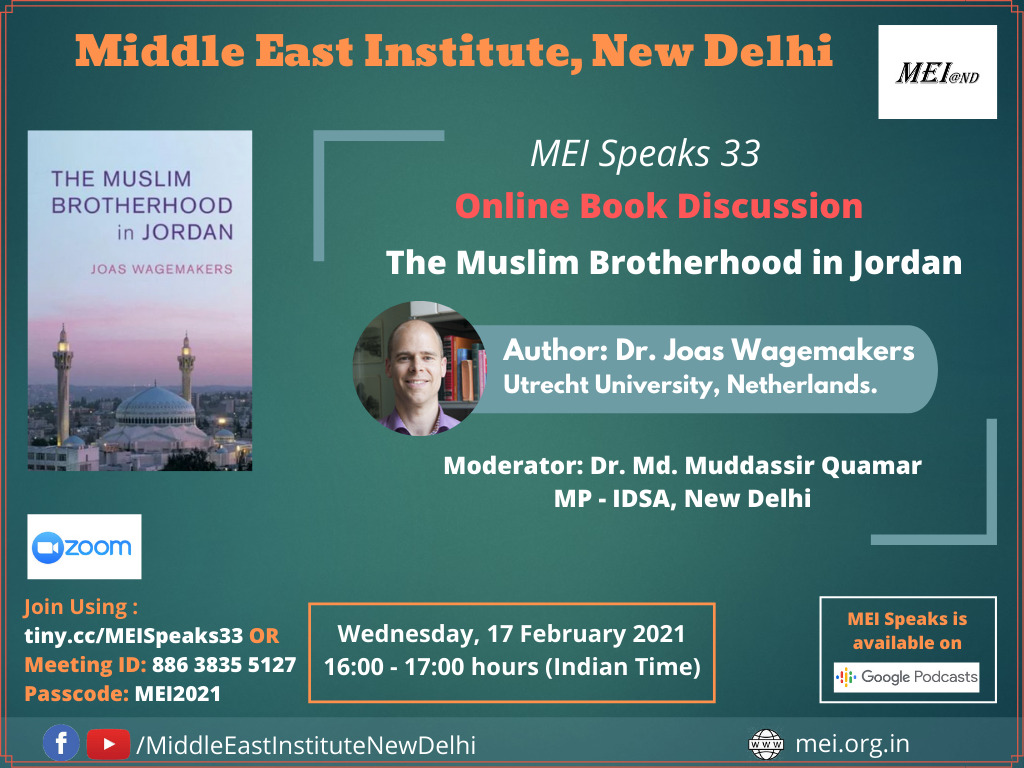
Middle East Institute, New Delhi invites you to MEI Speaks 33: Online Book Discussion Title: The Muslim Bro
Read More »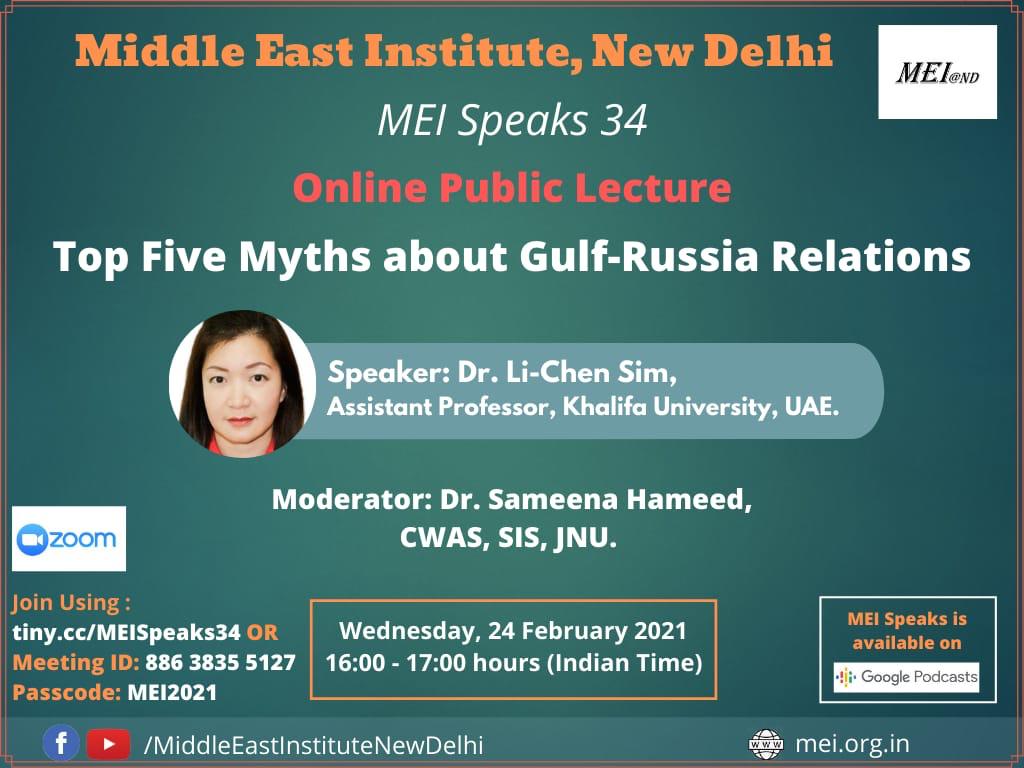
Middle East Institute, New Delhi invites you to MEI Speaks 34: Online Public Lecture Title: Top Five Myths
Read More »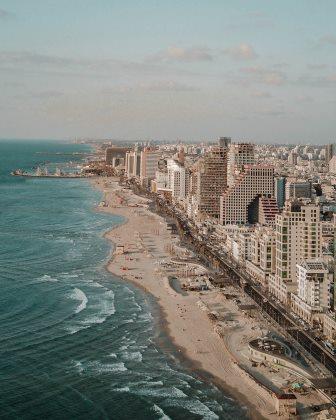
Looking to be engaged, challenged, immersed in your studies—and to propel your career forward? Israel of
Read More »
Middle East Institute, New Delhi invites you to MEI Speaks 35: Online Book Discussion Title: Israeli Foreig
Read More »
Middle East Institute, New Delhi invites you to MEI Speaks 36: Online Book Discussion Title: Breaking the B
Read More »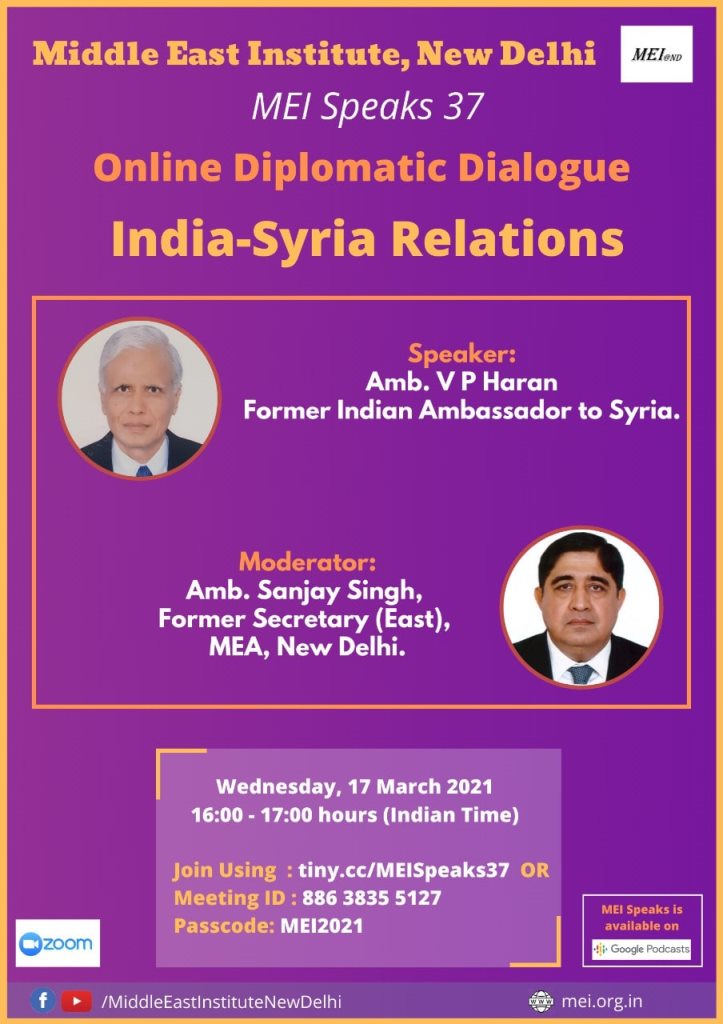
Middle East Institute, New Delhi invites you to MEI Speaks 37: Online Diplomatic Dialogue Title: India-Syri
Read More »
Middle East Institute, New Delhi invites you to MEI Speaks 38: Online Book Discussion Title: Turkey and Chi
Read More »
Middle East Institute, New Delhi invites you to MEI Speaks 39: Online Public Lecture Title: Will Israel Hav
Read More »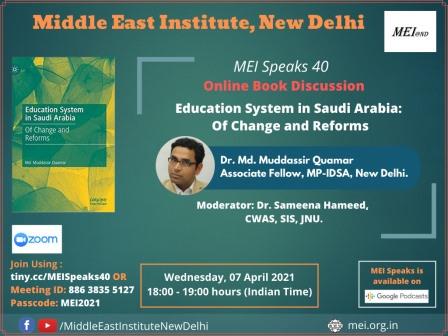
Middle East Institute, New Delhi invites you to MEI Speaks 40: Online Book Discussion Title: Education Syst
Read More »
Middle East Institute, New Delhi invites you to MEI Speaks 41: Online Diplomatic Dialogue Title: India-Bahr
Read More »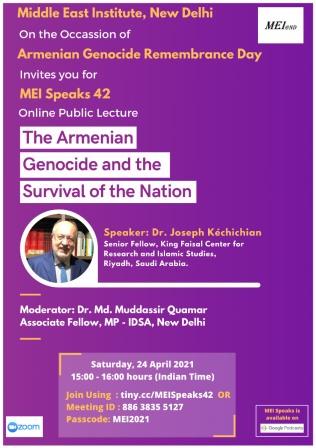
Middle East Institute, New Delhi invites you to MEI Speaks 42: Online Public Lecture Title: The Armenian Ge
Read More »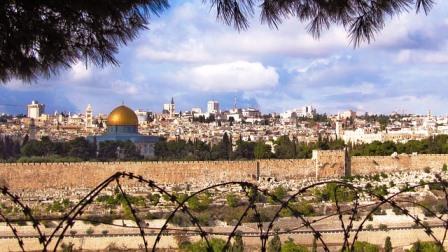
The European Association of Israel Studies (EAIS) invites applications for 4th GRADUATE WORKSHOP. Analysing th
Read More »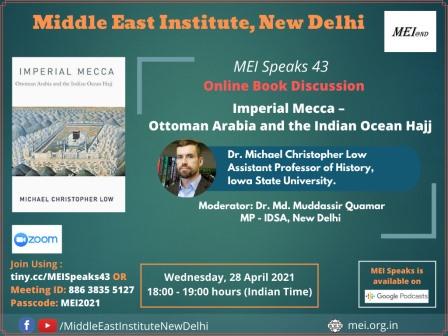
Middle East Institute, New Delhi invites you to MEI Speaks 43: Online Book Discussion Title: Imperial Mecca
Read More »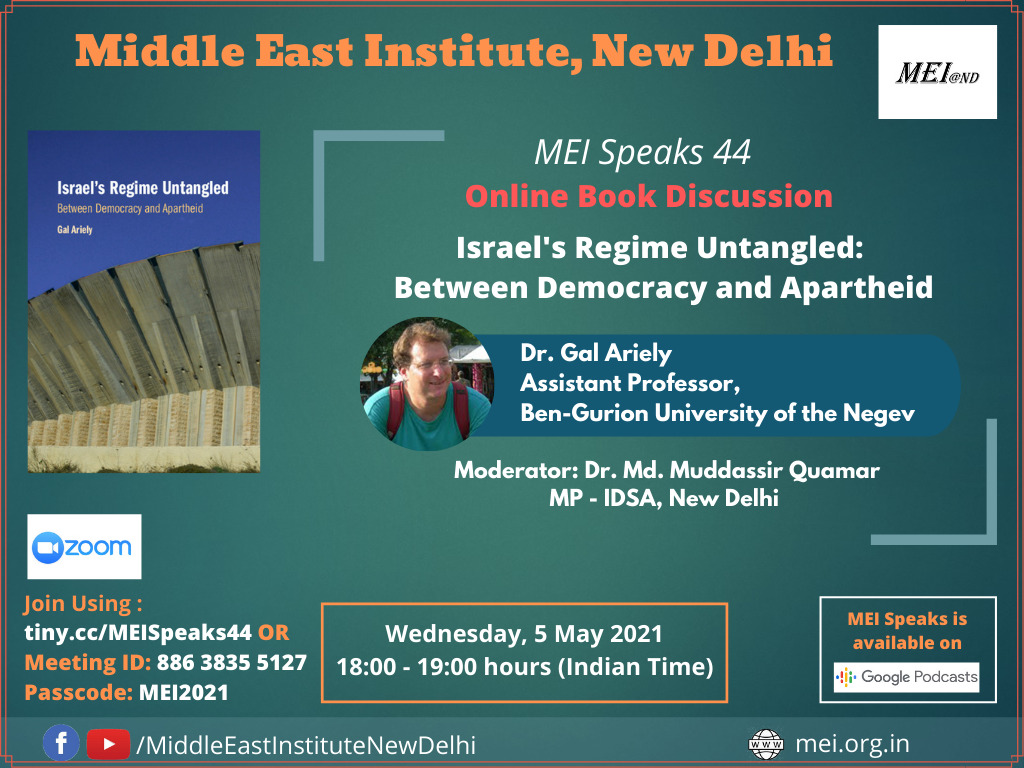
Middle East Institute, New Delhi invites you to MEI Speaks 44: Online Book Discussion Title: Israel’s
Read More »
Tel Aviv University invites you to its Annual Conference, 2021 on “The Americanization of the Israe
Read More »
USANAS Foundation invites you to a Panel Discussion on Israel’s diplomacy and foreign policy Date an
Read More »
Conference Theme: News Media in the Middle East: What is it Good for? Venue and date: University of O
Read More »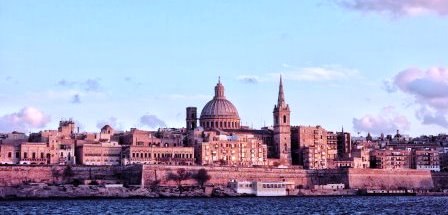
14th Pan-European Conference on International Relations Theme: The Power Politics of Nature Date: Wednes
Read More »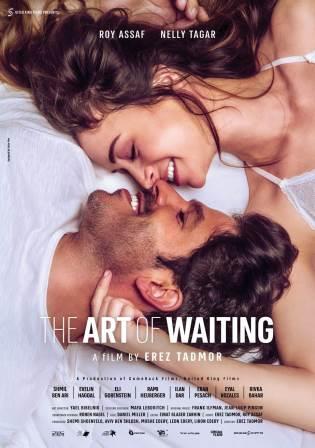
Embassy of Israel, cordially invite you to a Film Screening The Art of Waiting (Israel, 2020) Time: 15.
Read More »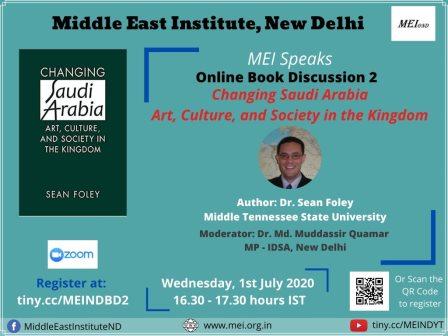
Middle East Institute, New Delhi invites you to MEI Speaks: Online Book Discussion 02 Title: Changing Saudi
Read More »
Middle East Institute, New Delhi invites you to MEI Speaks 05: Online Public Lecture Title: How Corruption
Read More »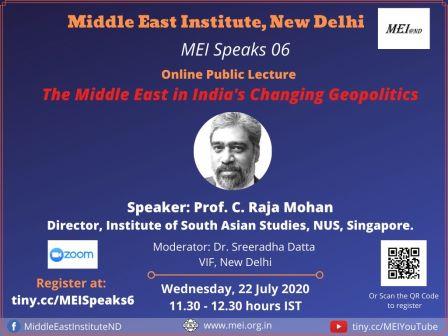
Middle East Institute, New Delhi invites you to MEI Speaks 06: Online Public Lecture Title: The Middle East
Read More »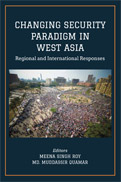
New Book: Changing Security Paradigm in West Asia: Regional and International Responses Authors: Editors, M
Read More »
Middle East Institute, New Delhi invites you to MEI Speaks: Online Book Discussion Title: Golda M
Read More »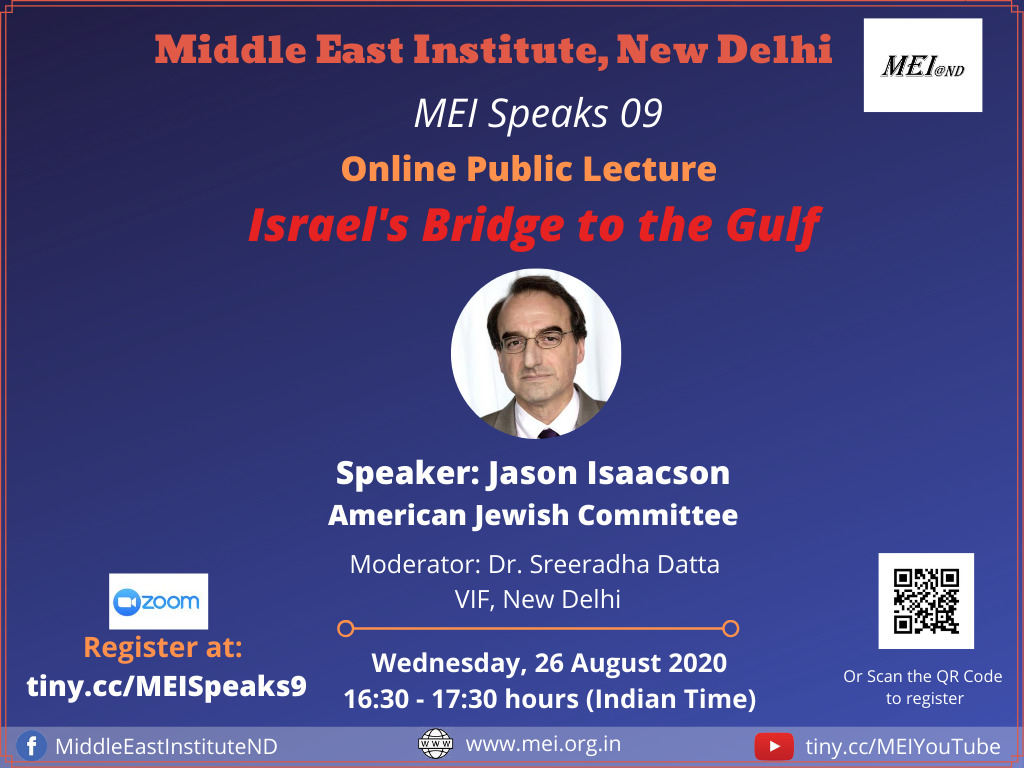
Middle East Institute, New Delhi invites you to MEI Speaks 09: Online Public Lecture Title: Israel’s
Read More »
You are cordially invited to register to join the audience of a Webinar Developments in the Middle East that i
Read More »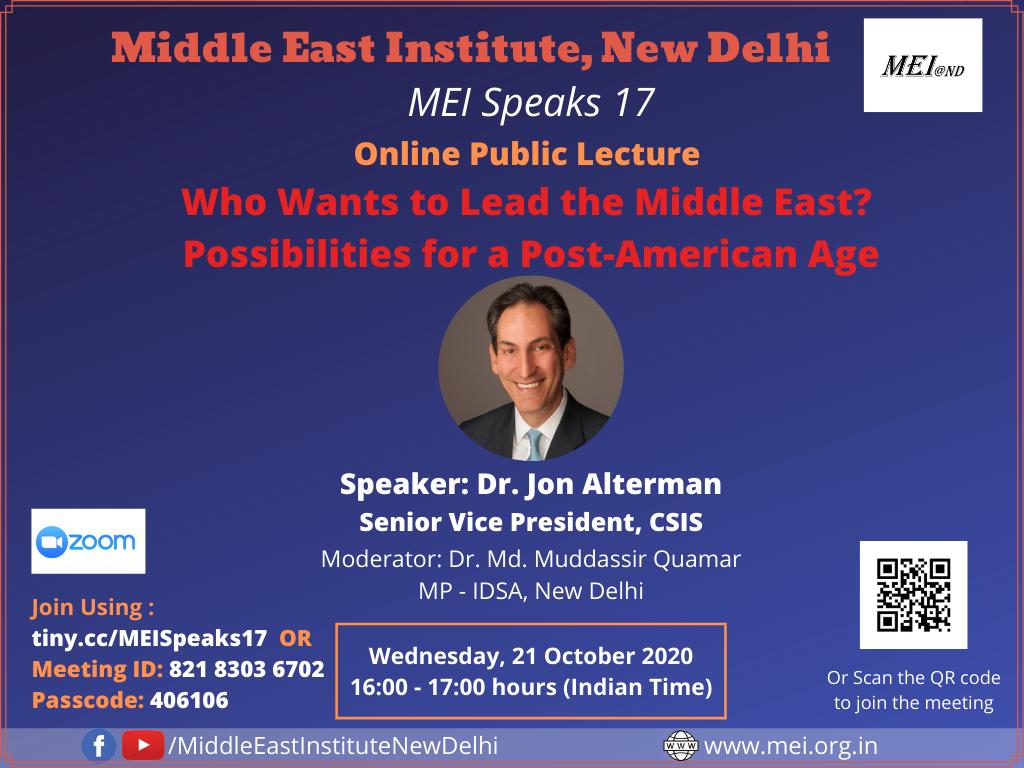
Middle East Institute, New Delhi invites you to MEI Speaks 17: Online Public Lecture Title: Who Wants to Le
Read More »
Department of Geopolitics and International Relations (GIR), Manipal Academy of Higher Education, Manipal, and
Read More »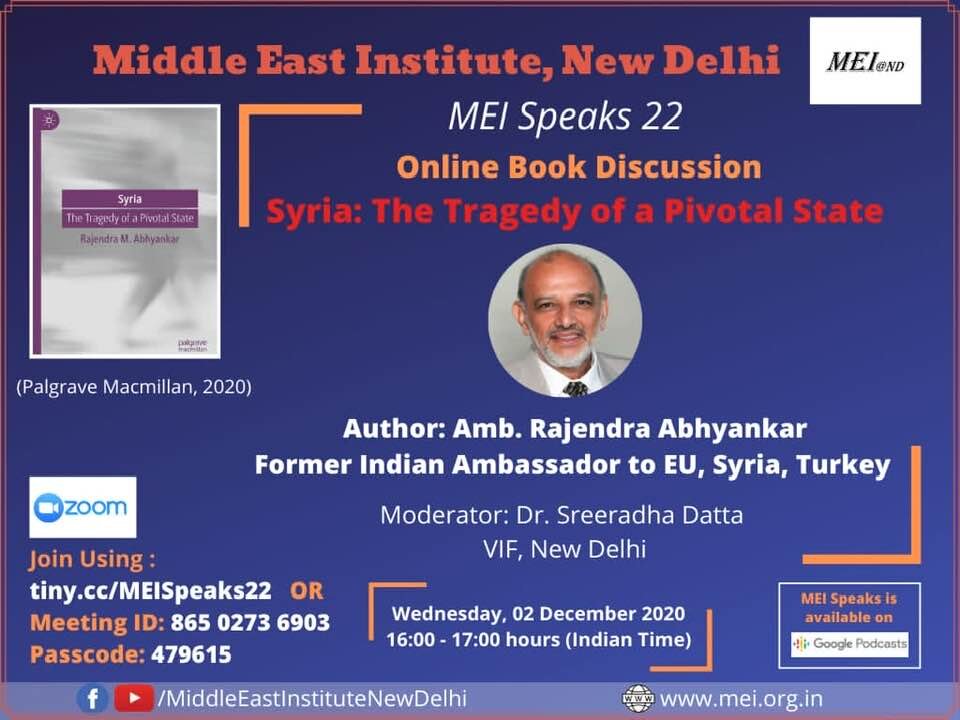
Middle East Institute, New Delhi invites you to MEI Speaks 22: Online Book Discussion Title: Syria: The Tra
Read More »
Middle East Institute, New Delhi invites you to MEI Speaks 23: Online Public Lecture Title: Covid-19, Gulf
Read More »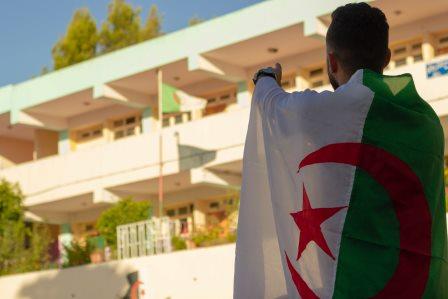
Center for Near and Middle Eastern Studies (CNMS), Germany invites you to an International Webinar on Civil Wa
Read More »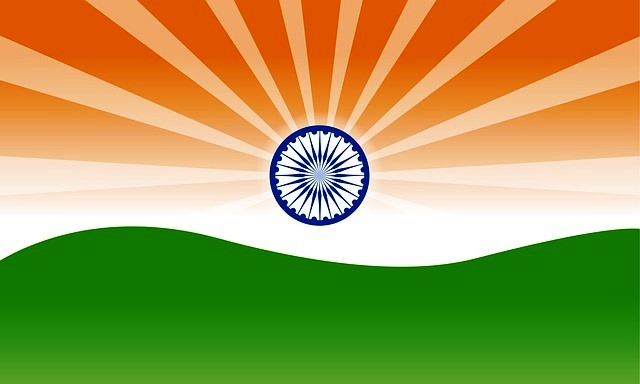
The Begin-Sadat Center for Strategic Studies invites the public to a lecture. Title: The Middle East Challe
Read More »
Middle East Institute, New Delhi invites you to MEI Speaks: Online Book Discussion 01 Title: Creating the M
Read More »
Middle East Institute, New Delhi invites you to MEI Speaks: Online Public Lecture Title: Israel’s Ann
Read More »
Middle East Institute, New Delhi invites you to MEI Speaks 07: Online Public Lecture Title: After Netanyahu
Read More »
Middle East Institute, New Delhi invites you to MEI Speaks 14: Online Book Discussion Title: China and Midd
Read More »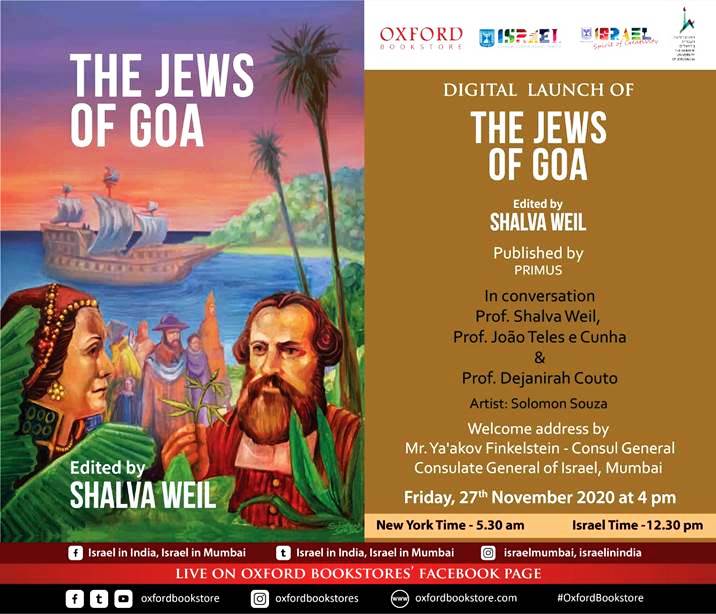
You are invited to attend the LIVE digital launch of Professor Shalva Weil's book The Jews of Goa On Oxfor
Read More »
European Association of Israel Studies organizes the 8th Annual conference on Israel Studies Conference The
Read More »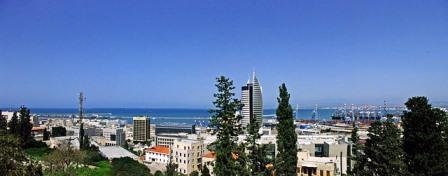
The Asian Sphere: Trans-Cultural Flows| An Inter-University Graduate Program The University of Haifa and the H
Read More »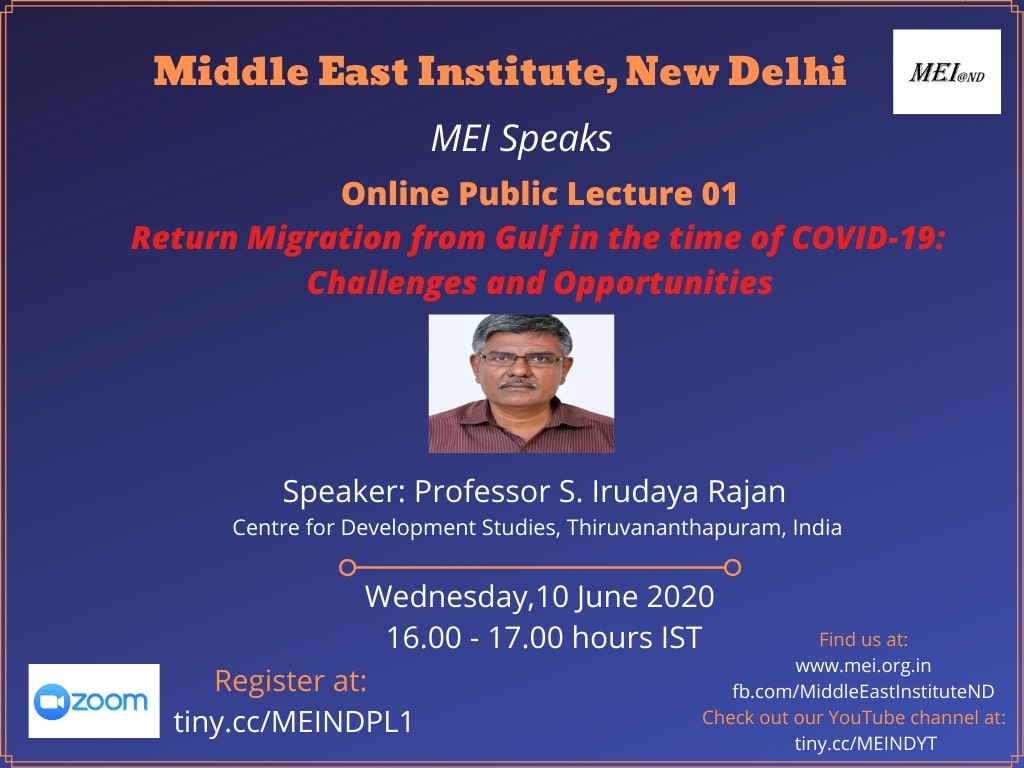
Middle East Institute, New Delhi invites you to MEI Speaks: Online Public Lecture 01 Title: Return Migratio
Read More »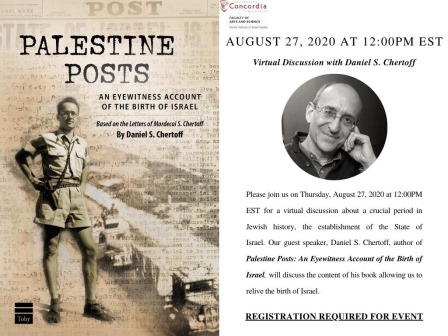
Concordia University, Faculty of Arts and Science, invites you to a virtual discussion on A crucial peri
Read More »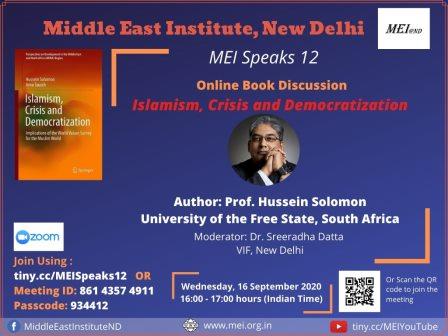
Middle East Institute, New Delhi invites you to MEI Speaks 12: Online Book Discussion Title: Islamism, Cris
Read More »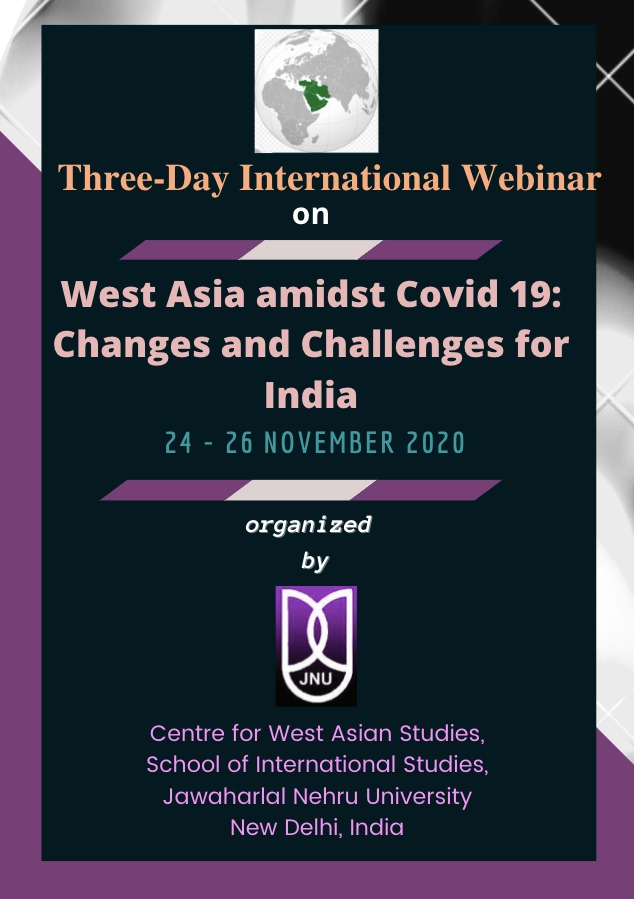
Center for West Asian Studies, School of International Studies, Jawaharlal Nehru University invites you to a t
Read More »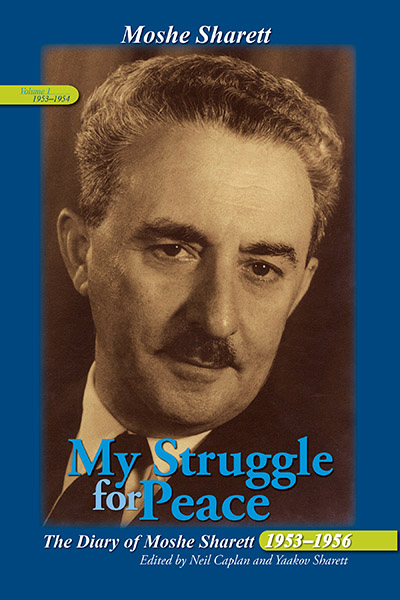
My Struggle for Peace: The Diary of Moshe Sharett, 1953–1956 (3 Vol. Set) Edited by Neil Caplan
Read More »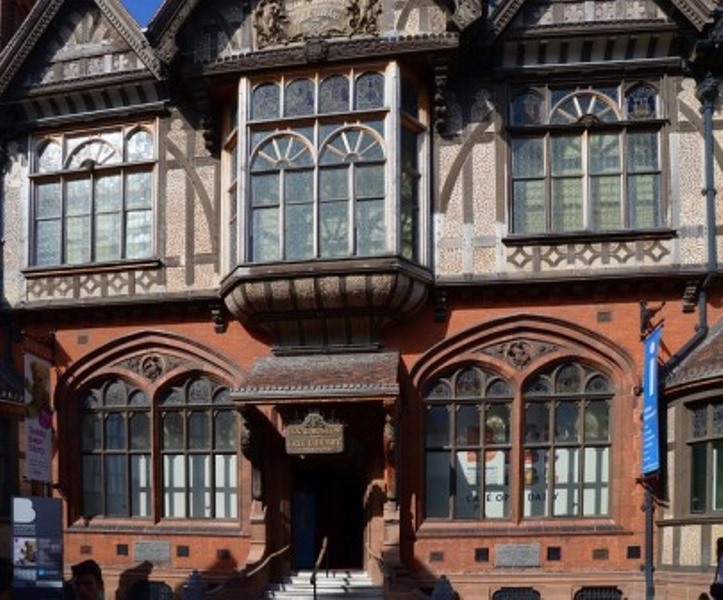
The British Society for Middle Eastern Studies and the University of Kent’s School of Politics and Inter
Read More »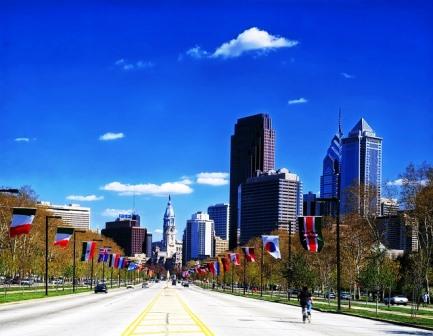
Title: Movement, Mobility, And The Journey: Ancient Actions And Perspectives Conference Date: 28 Febr
Read More »
The Maghreb Review and The Maghreb Studies Association invite Original Papers For Conference Title: Empire
Read More »
The Baghdadi Jews in India: Maintaining Communities , Negotiating Identities and Creating Super-Diversity.
Read More »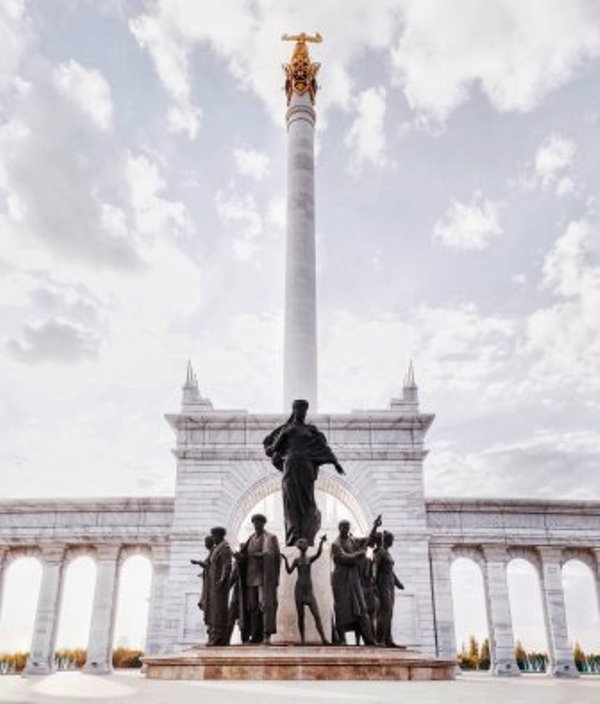
Theme: Sacred Geography: Multi-Disciplinary Approaches In Space And Time Conference Date: September 24th to
Read More »
Middle East Institute, New Delhi invites you to MEI Speaks 21: Online Public Lecture Title: Musical crimino
Read More »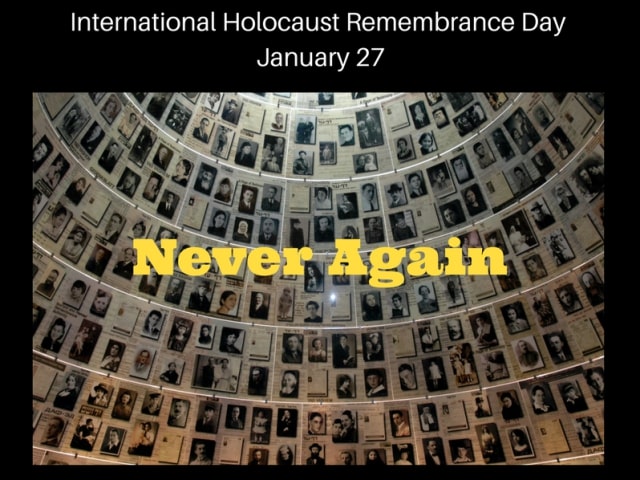
‘NEVER AGAIN’ The Significance and Contemporary Relevance of the Holocaust On the occasion of I
Read More »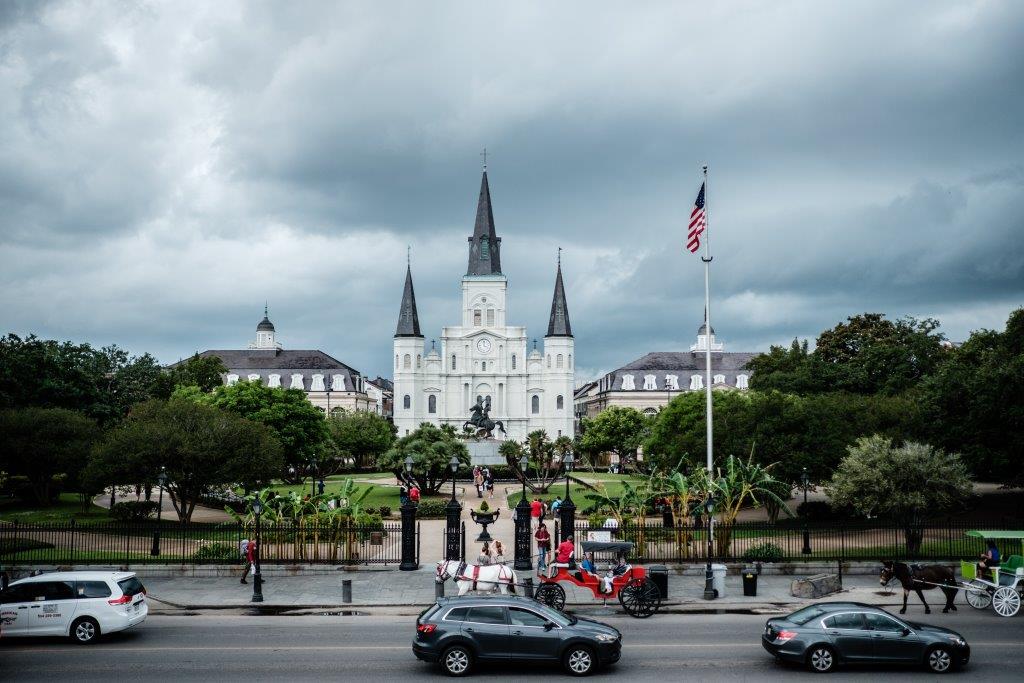
Conference theme: American Jewry and Israel: Intersections and Connections between Homelands and Diasporas
Read More »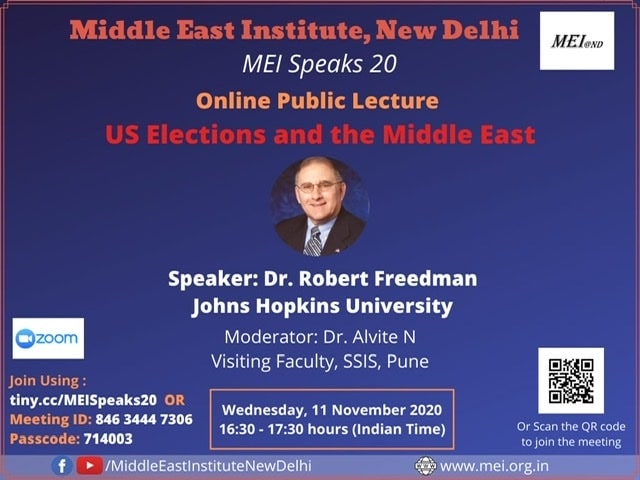
Middle East Institute, New Delhi invites you to MEI Speaks 20: Online Public Lecture Title: US Elections an
Read More »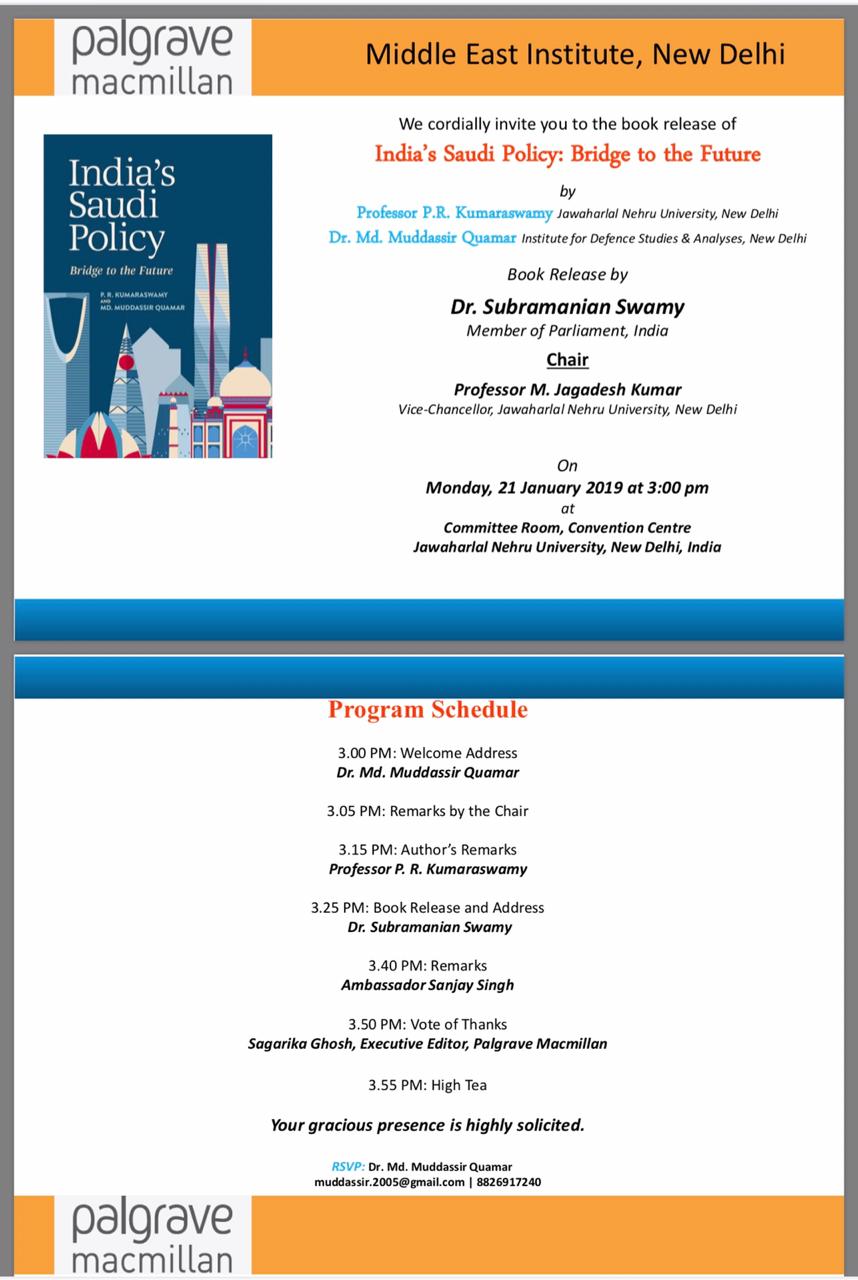
Middle East Institute, New Delhi cordially invites you to the book release of India's Saudi Policy: B
Read More »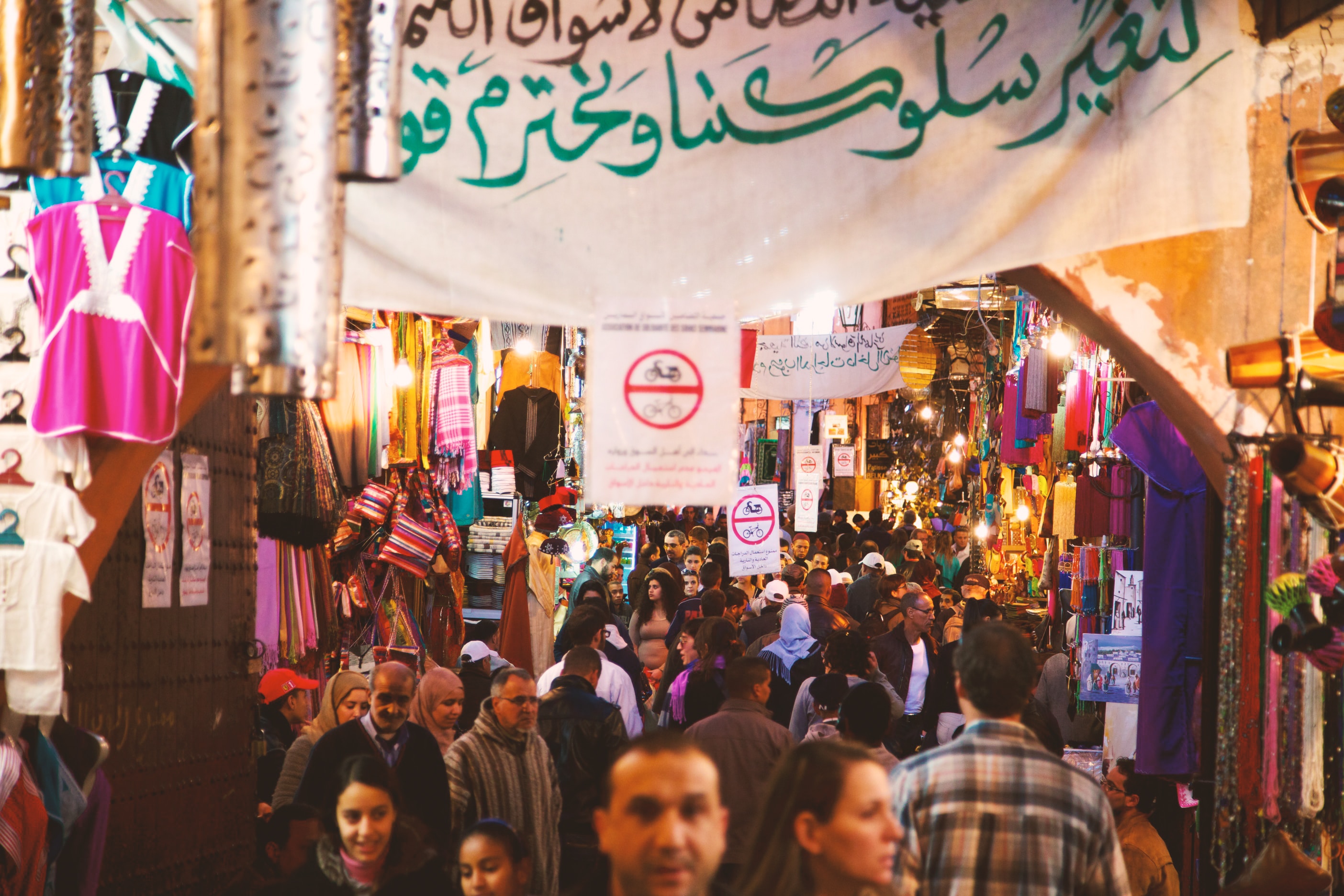
International Studies Association announces Call for Proposals for the ISA 2020 Joint International Conference
Read More »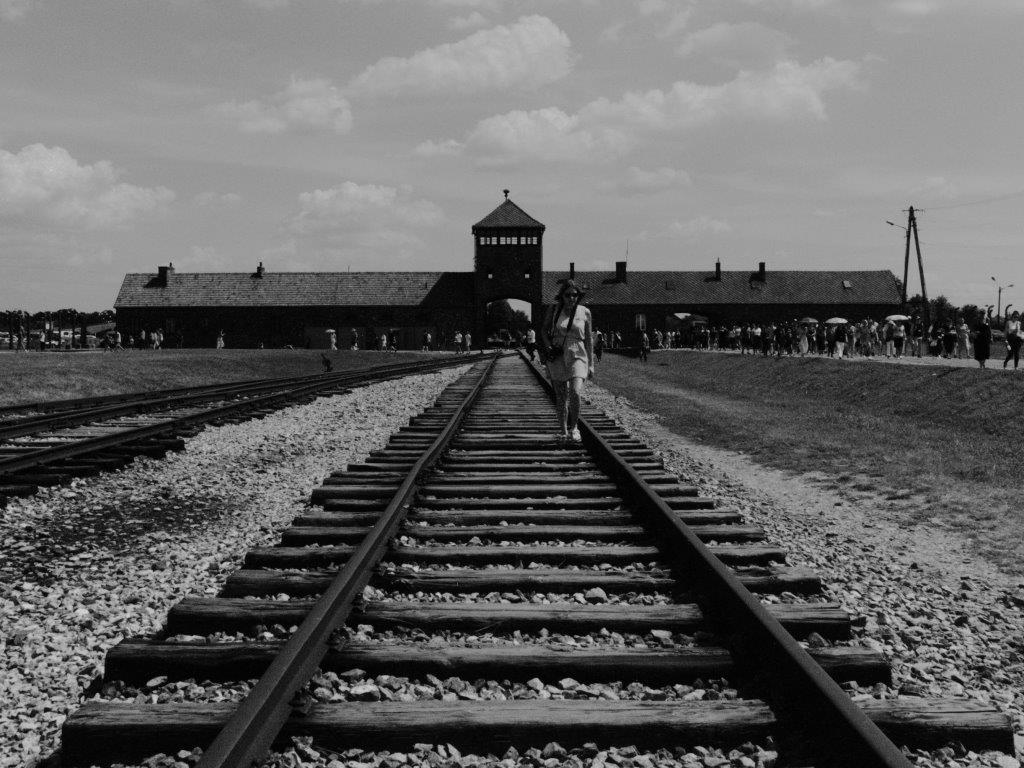
The Ackerman Center for Holocaust Studies at The University of Texas at Dallas invites you to join fellow scho
Read More »
AIS 2021 invites proposals for the 37th Annual Meeting of The Association for Israel Studies, Virtually hosted
Read More »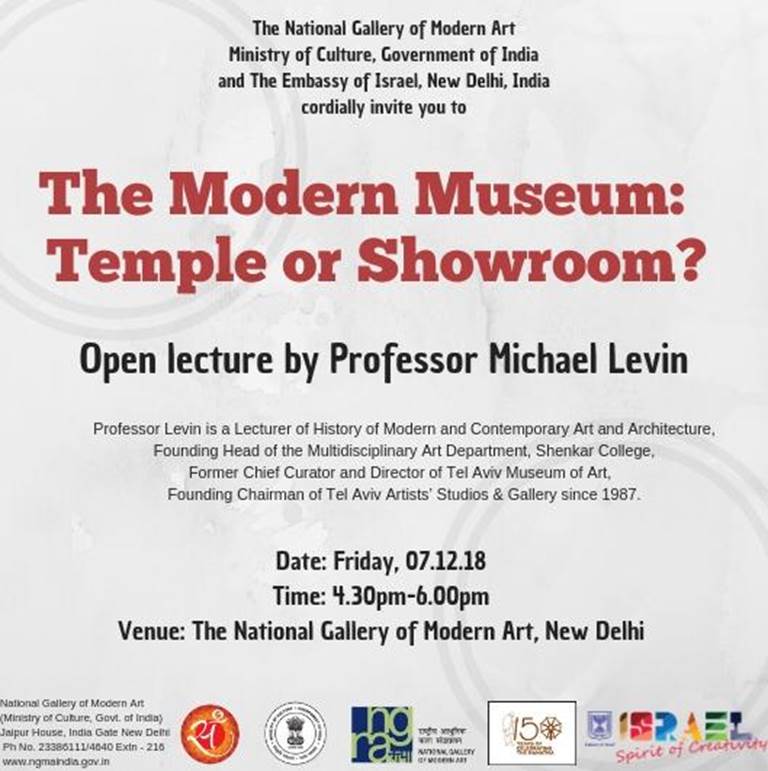
The Modern Museum: Temple or Showroom? Open Lecture by Prof. Michael Levin Date: 07/12/2018, Frida
Read More »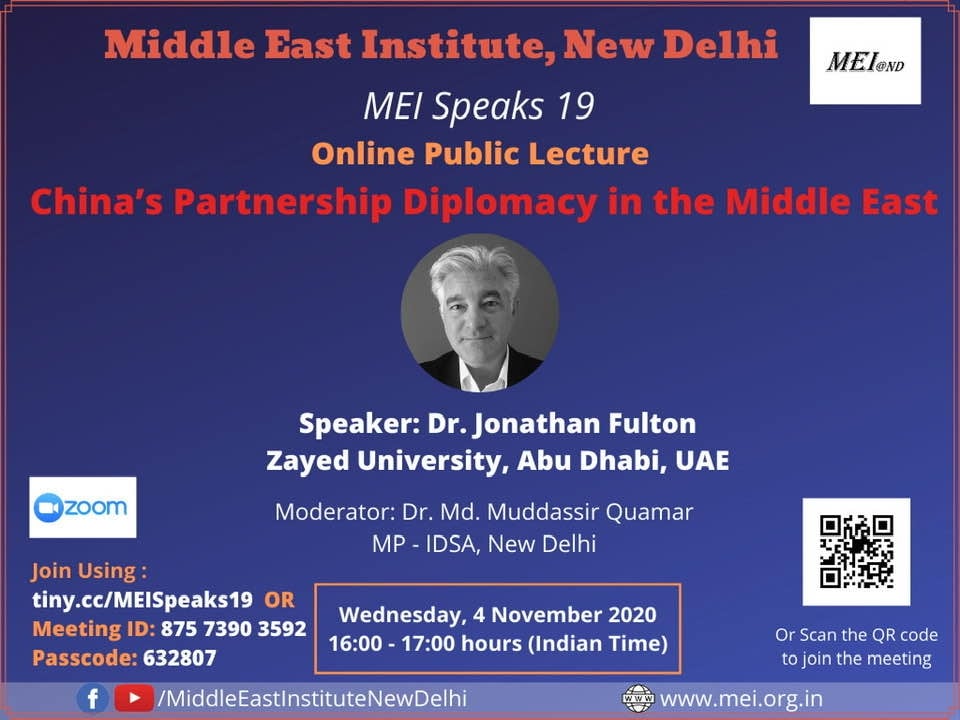
Middle East Institute, New Delhi invites you to MEI Speaks 19: Online Public Lecture Title: China’s P
Read More »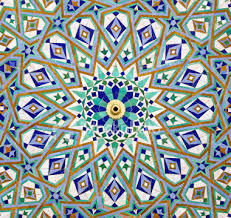
The Academic Committee for AIIASC 2019 invites papers on the theme: Ascending India: Reflections on
Read More »
The Israel-Asia Leaders Fellowship develops and invests in future leaders in Israel-Asia relations by providin
Read More »
The University of Virginia Jewish Studies Program, an interdisciplinary program drawing on more than thir
Read More »
The Department of Middle Eastern and South Asian Studies (MESAS) and the Tam Institute for Jewish Studies (TIJ
Read More »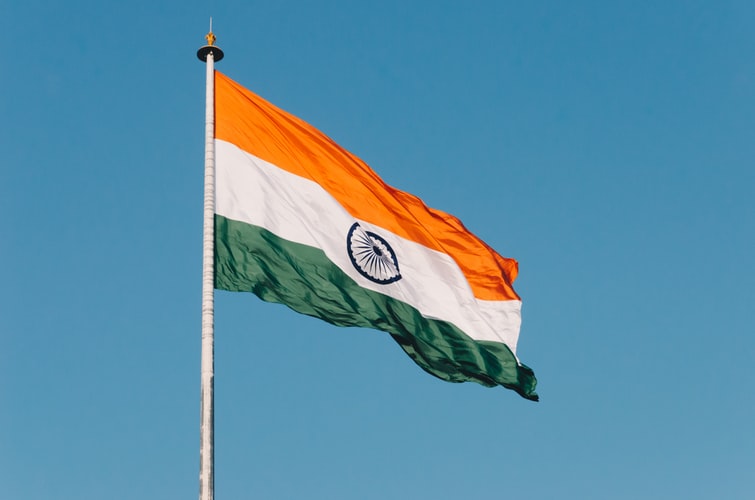
Ministry of External Affairs, Government of India issue notification on Job vacancies For more detail
Read More »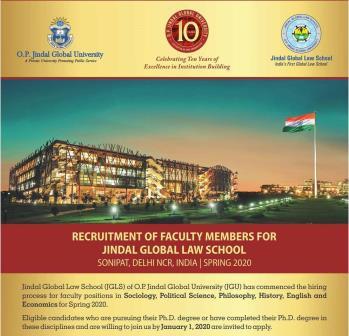
Recruitment of faculty Members for Jindal Global Law School, Sonipat, Delhi NCR, India Jindal Global Law Sc
Read More »
The UCLA Y&S Nazarian Center for Israel Studies invites applications for Visiting Faculty and Sc
Read More »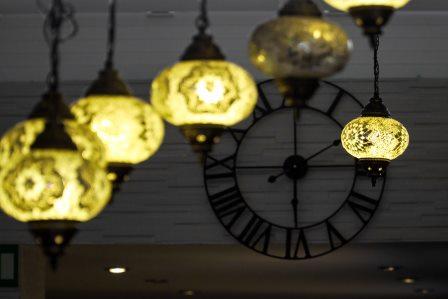
Teach, conduct research, and build your academic network in the United States. The Teaching Fellow Program pla
Read More »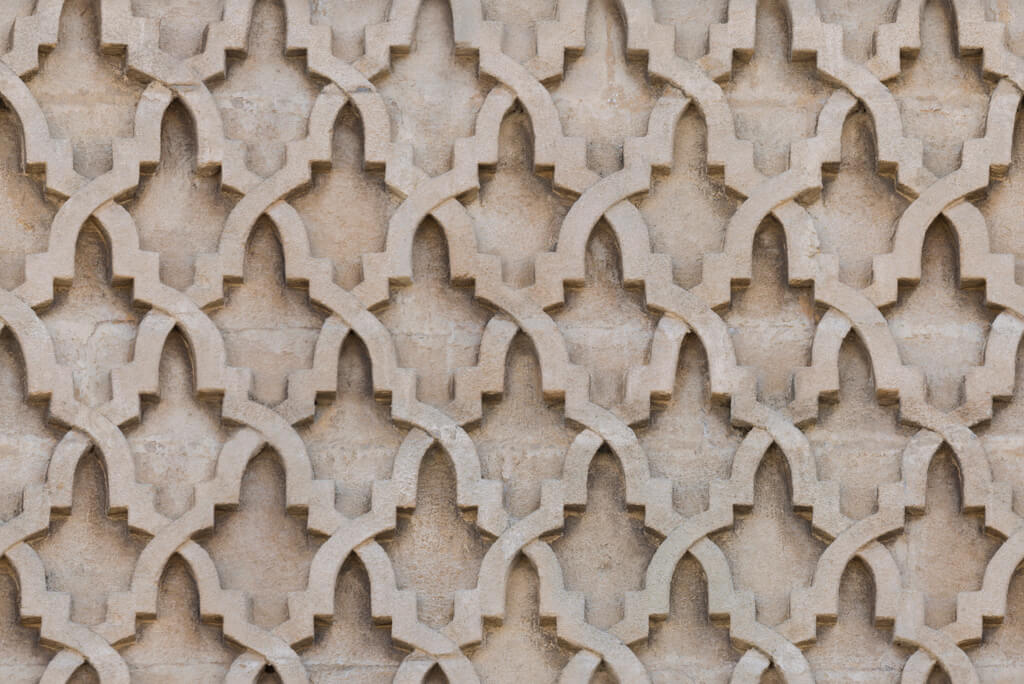
The applications for the Urban Fellows Programme (UFP) 2018-19 are now open. The UFP is a tuition free, nine-m
Read More »
The Schusterman Center's Summer Institute for Israel Studies welcomes tenure-track faculty from the U
Read More »
Applications for the 2019-20 ISRAEL-ASIA LEADERS FELLOWSHIP are now open.This is a unique leade
Read More »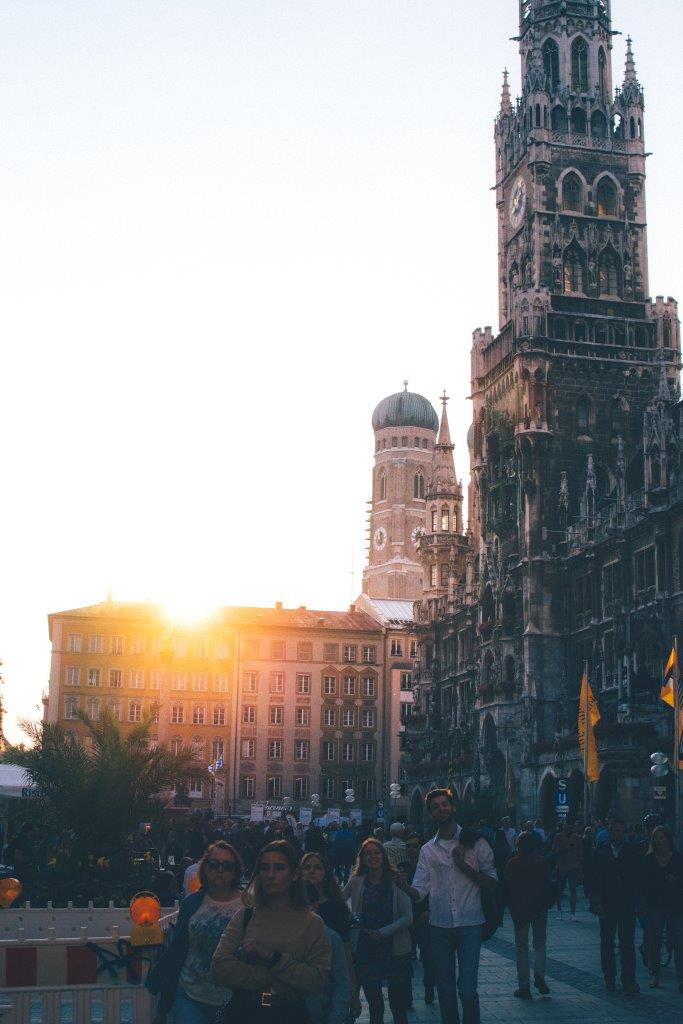
Maximilians-Universität München, one of the leading research universities in Europe, with a more tha
Read More »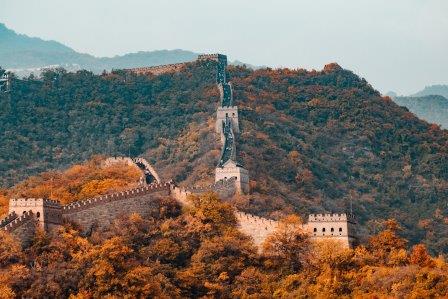
National Defense University is a military academy in Taiwan, ROC. It invites applications for full-time contra
Read More »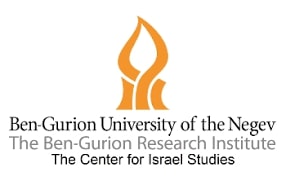
Call for proposals for Post-Doctoral Research in the Social Sciences and/or the Humanities on the subject
Read More »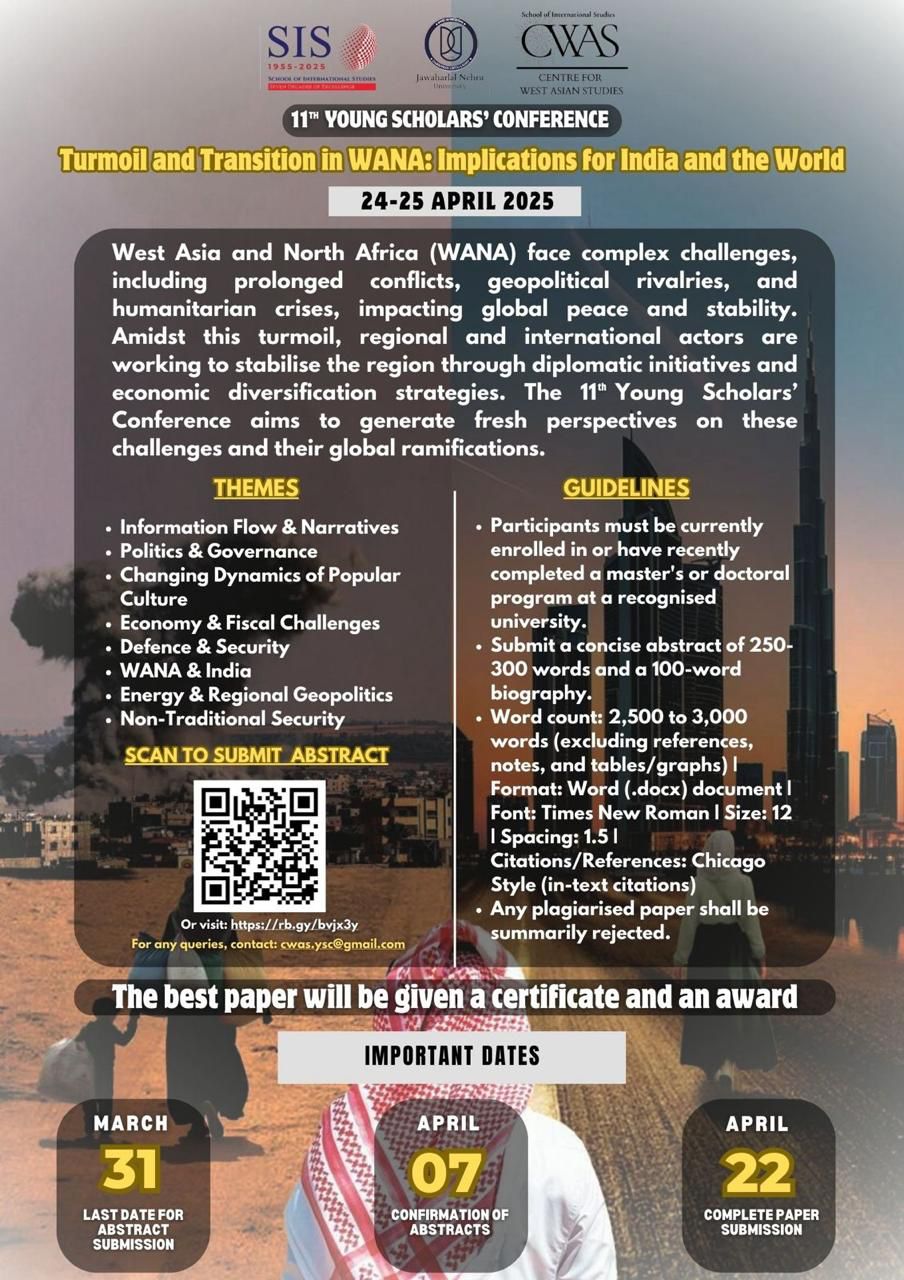
Centre for West Asian Studies, SIS, JNU, New Delhi invites you to the 11th Young Scholars’ Conferen
Read More »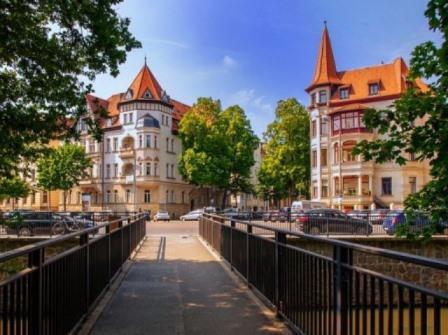
The Arab-German Young Academy of Sciences and Humanities (AGYA) in cooperation with the Institute of Oriental
Read More »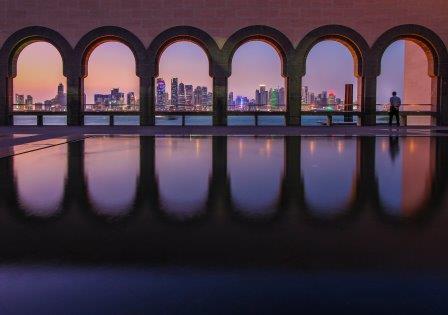
Theme: Oceanic Circularities: The Indian Ocean in the Modern World Venue: Georgetown University, Qatar D
Read More »
Call for Papers International Conference Organized By Department of Political Science, Bidhan Chandra Colle
Read More »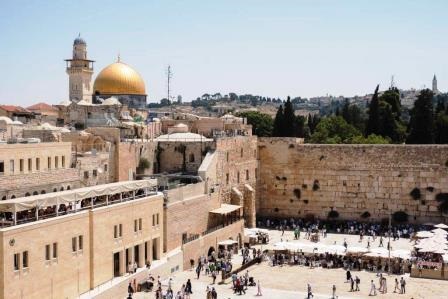
The Azrieli Institute of Israel Studies is excited and proud to announce its new partnership with Mc
Read More »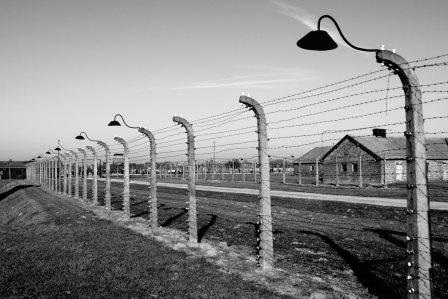
The Dvora and Michael Goldhirsh Foundation at the Ben-Gurion Research Institute for the Study of Israel and Zi
Read More »
The Berlin-based Forum Transregionale Studien invites researchers to apply for up to 5 postdoctoral fello
Read More »
International Graduate Studies Congress (IGSCONG`21) will be held between 17-20 June 2021, with online partici
Read More »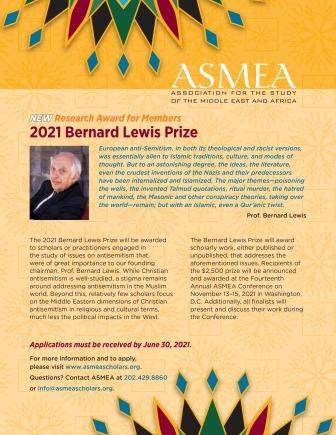
Association for the Study of the Middle East and Africa invites application for the 2021 Bernard Lewis Award.
Read More »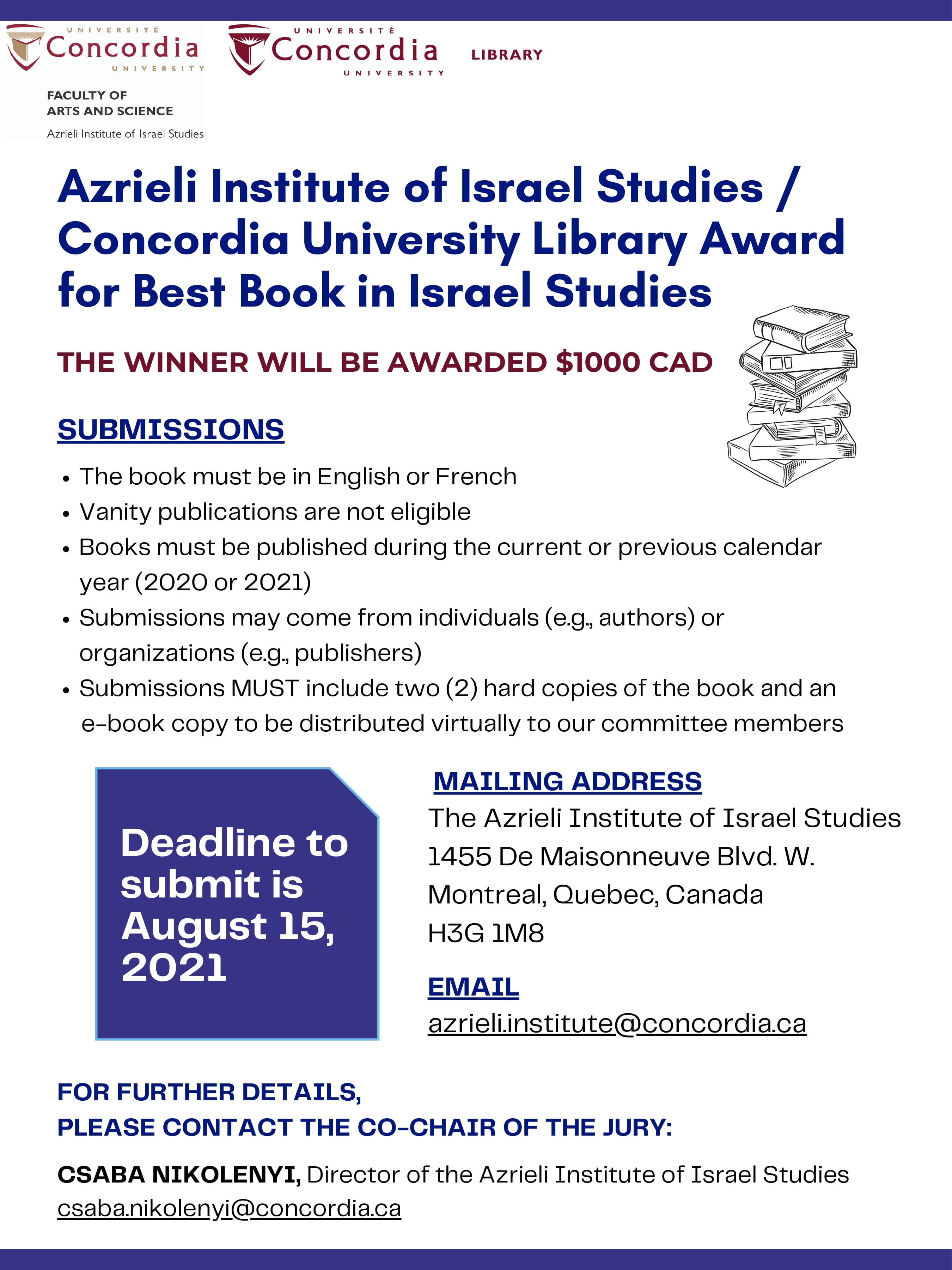
Azrieli Institute of Israel Studies / Concordia University Library invite book proposals for Best Book in Isra
Read More »
Fifteenth Annual ASMEA Conference: Call for Papers & Panels Washington Marriott Georgetown
Read More »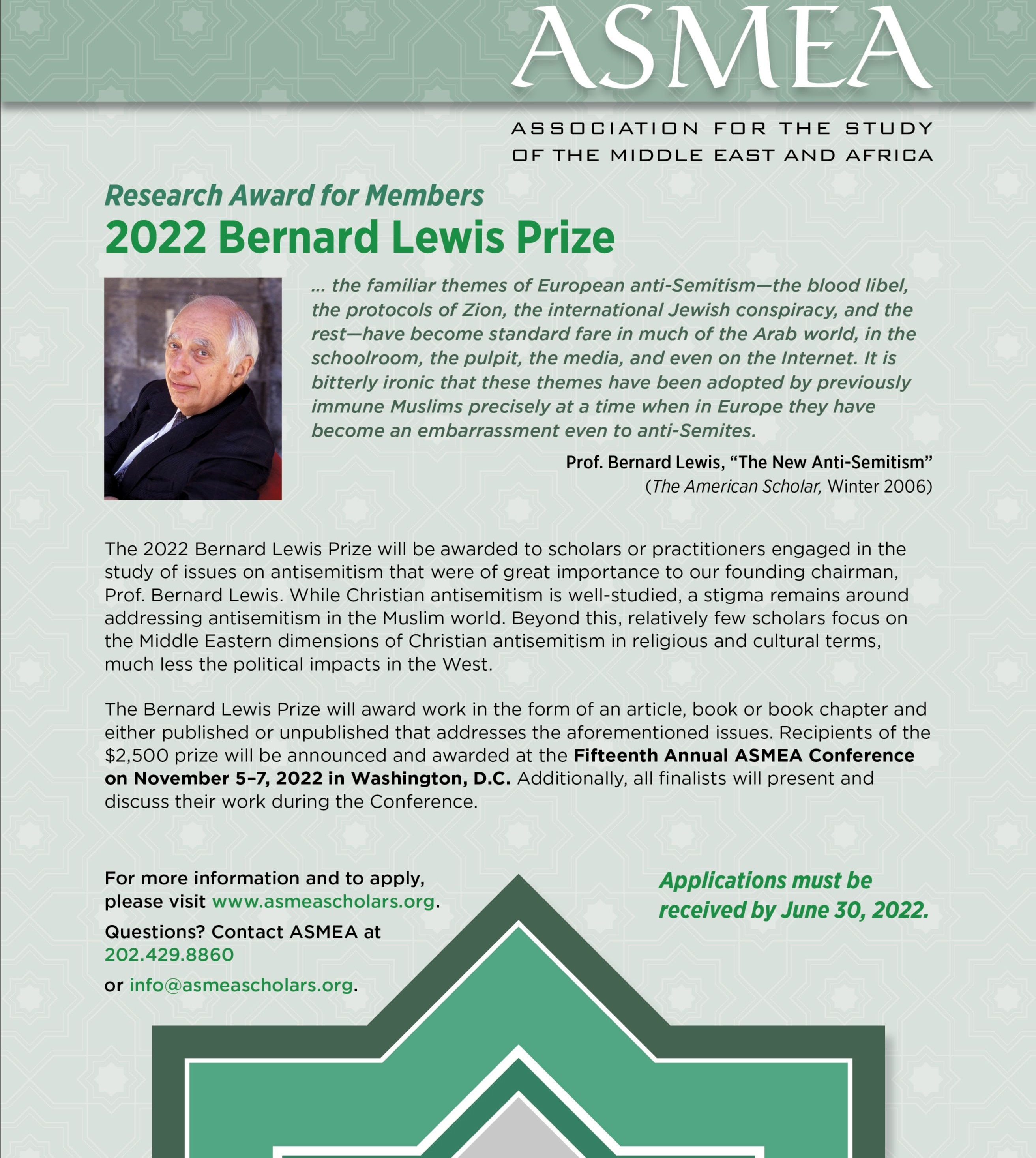
Association for the Study of the Middle East and Africa (ASMEA) invites applications for the 2022 Bernard Lewi
Read More »
ASMEA is currently seeking proposals for outstanding paper and panel presentations at the Sixteenth
Read More »
Invitation for papers/articles submission for consideration of Publication in Journal of West Asian Studies Vo
Read More »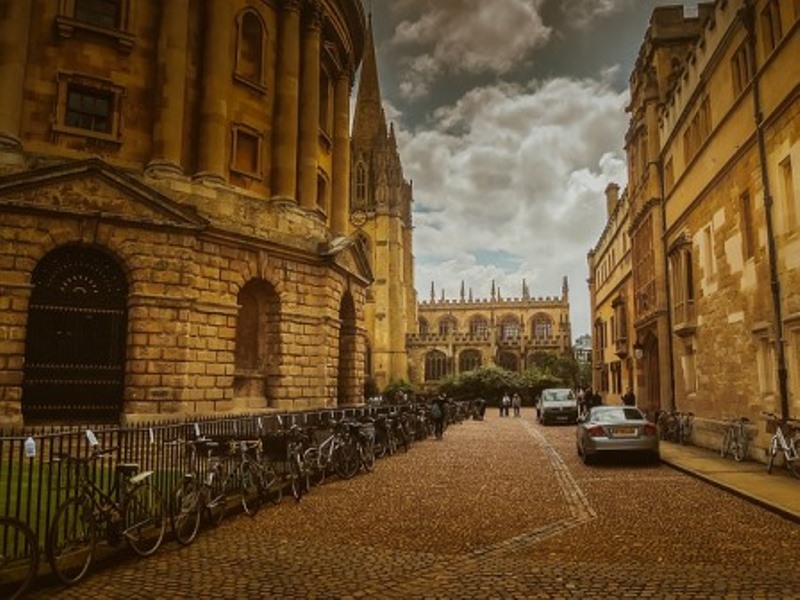
The Oxford Centre for Hebrew and Jewish Studies invites applications for Fellowships for the 2020-2021 seminar
Read More »
Call for Proposals: Association for Jewish Studies, 52nd Annual Conference Conference date: December
Read More »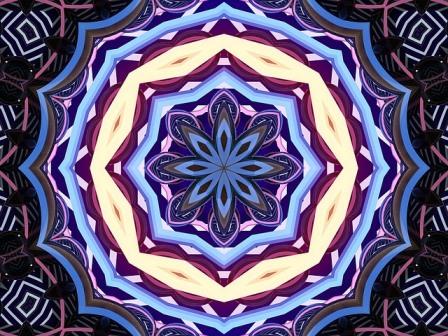
Title: “Empire in the Middle East and the Maghreb: The Shaping of Hopes and Perspectives”, Venu
Read More »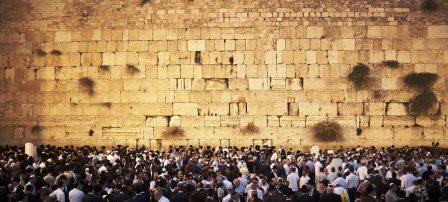
Israiliyat: Journal of Israeli and Judaic Studies (e-ISSN 2645-890X) invites you to send proposals for the fou
Read More »
The Berlin Graduate School Muslim Cultures and Societies will admit up to ten Ph.D. fellows to its doctoral pr
Read More »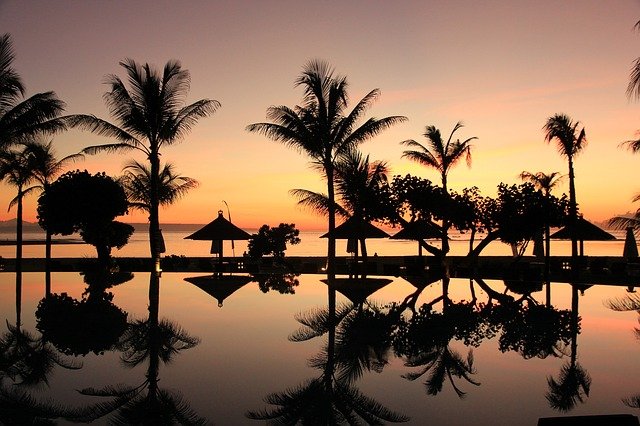
Israel Asia Center invites you to Israel-Indonesia Futures Program. The online program will engage the rising
Read More »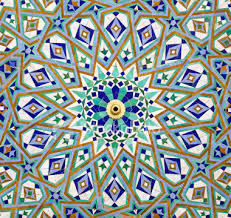
Dr. Uriel Adiv in Jerusalem is the father of a child from a rural English school in the south o
Read More »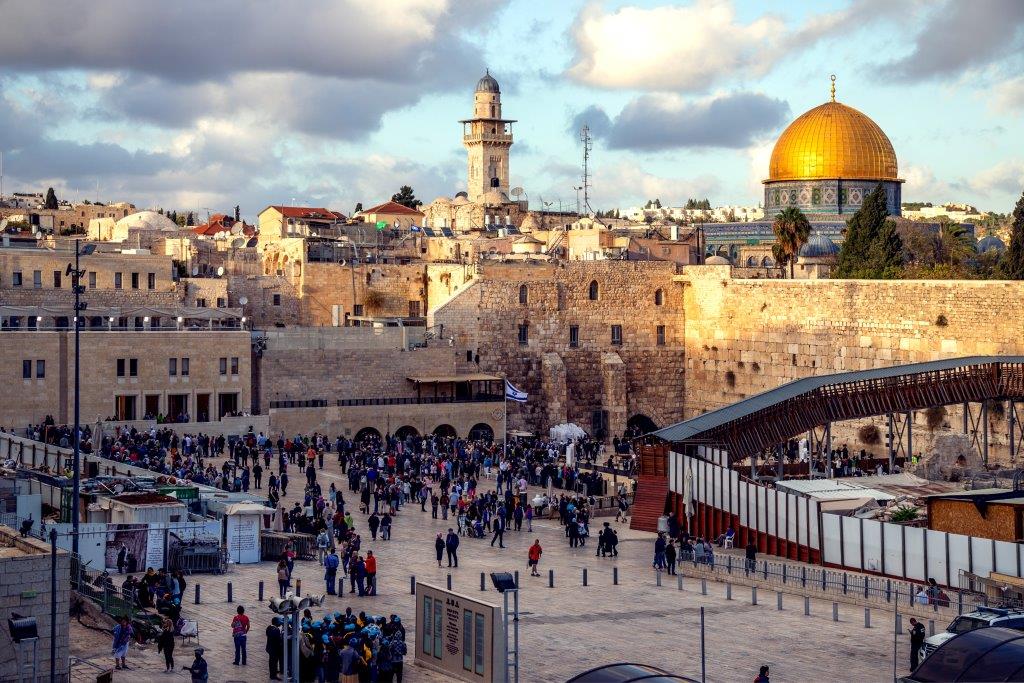
The Woodman-Scheller Israel Studies International is offering MA Program, that goes beyond traditional discipl
Read More »
International Communication Association 2020 Digital South Asia Preconference Theme: Digital Cultures of So
Read More »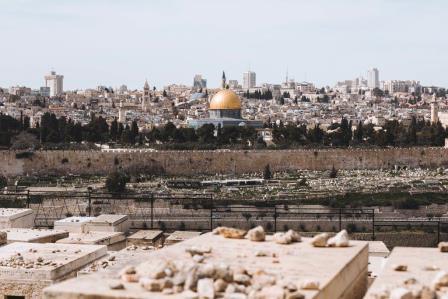
Registration is now open for Coexistence in the Middle East (CME) summer program between June 29 - July 23 and
Read More »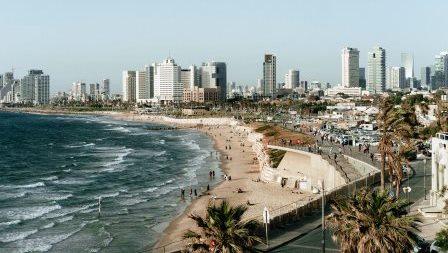
Registration is now open for InnovNation summer program from June 29 - July 23, 2020, organized in collaborati
Read More »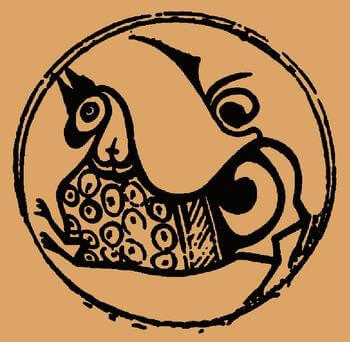
Ninth European Conference of Iranian Studies (ECIS 9) Berlin, 09 – 13.09.2019 The European Co
Read More »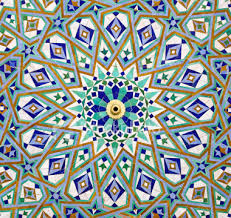
MEI@ND invites propoposals for the Monograph series. The initial interest areas are: pre-1947 India and the re
Read More »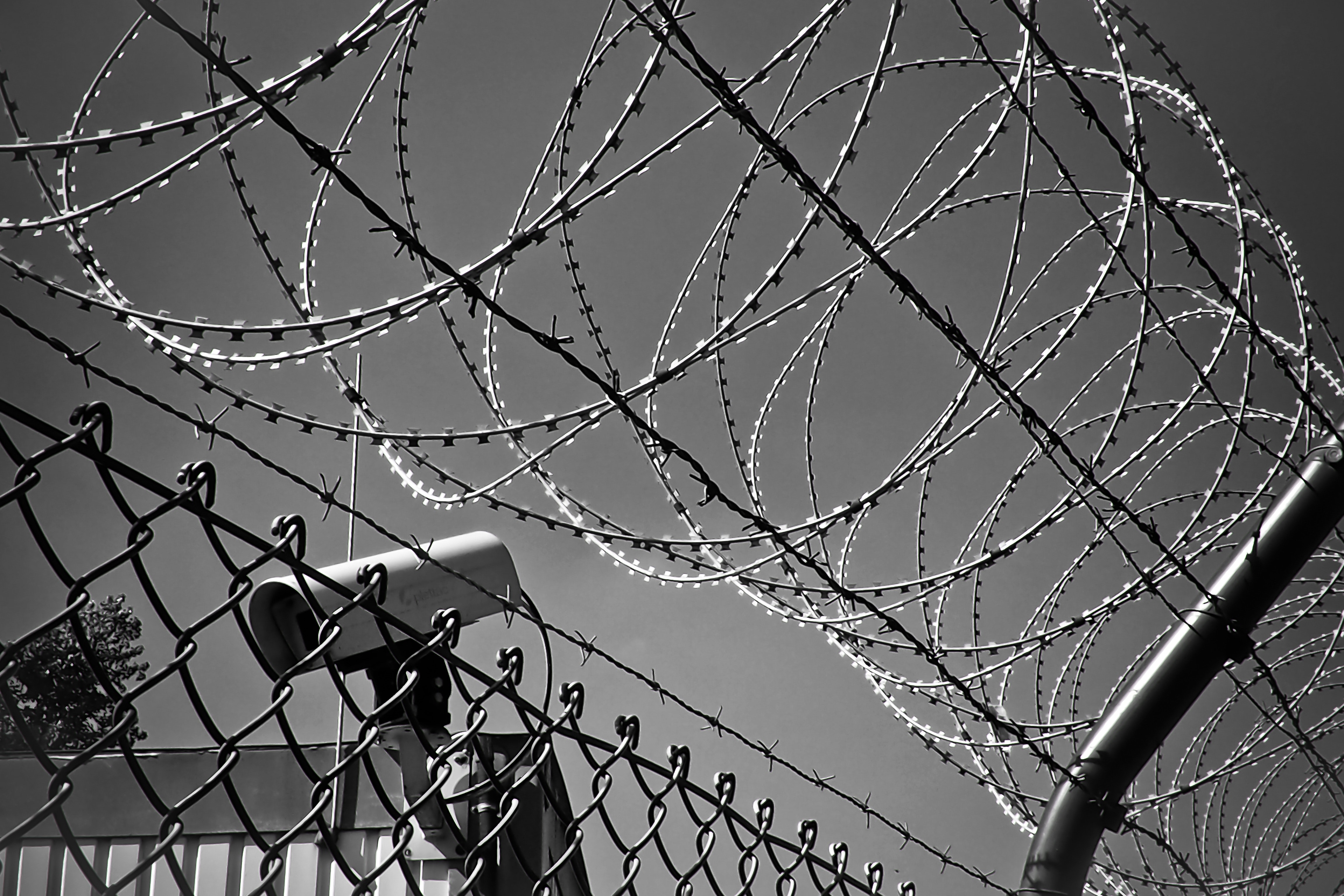
The Institute for National Security Studies (INSS) at Tel Aviv University invites submission of articles for C
Read More »
Papers are invited for Commentaries and Occasional Papers Series of the MEI@ND. Please add your entries to
Read More »
26th International Congress of the German Middle East Studies Association (DAVO) combined with the Conference
Read More »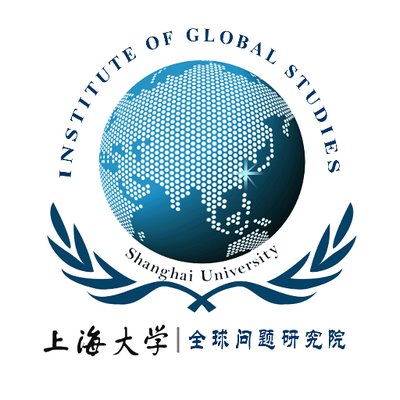
Institute of Global Studies, Shanghai University, People’s Republic of China invites proposal for The Fi
Read More »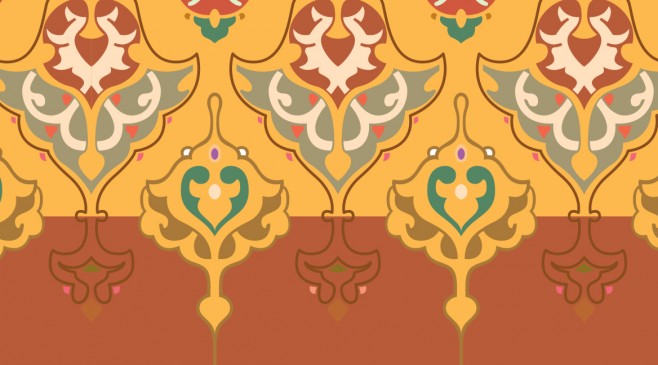
The Association for the Study of the Middle East and Africa (ASMEA) invites proposals for the 12th ASMEA&
Read More »